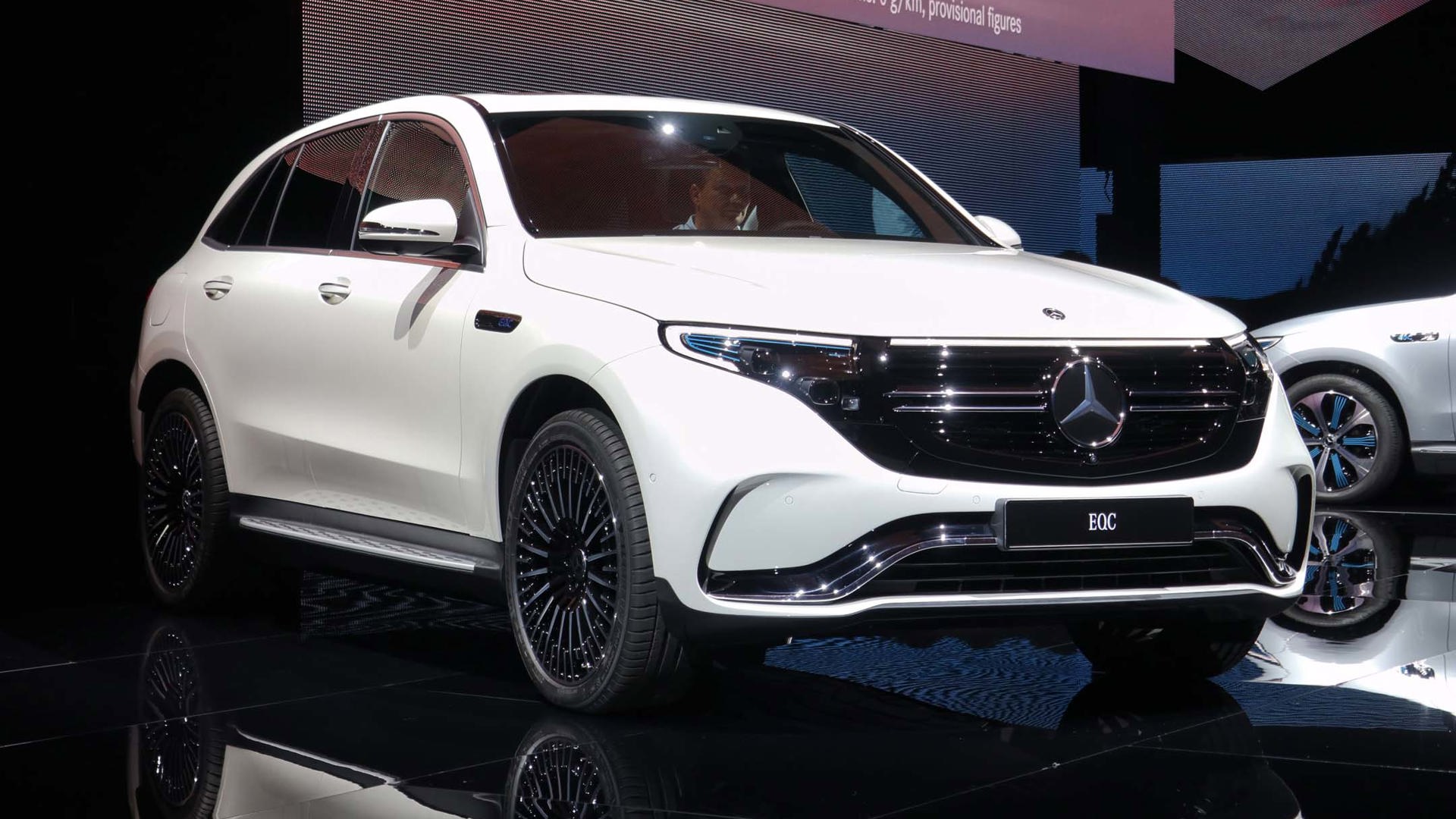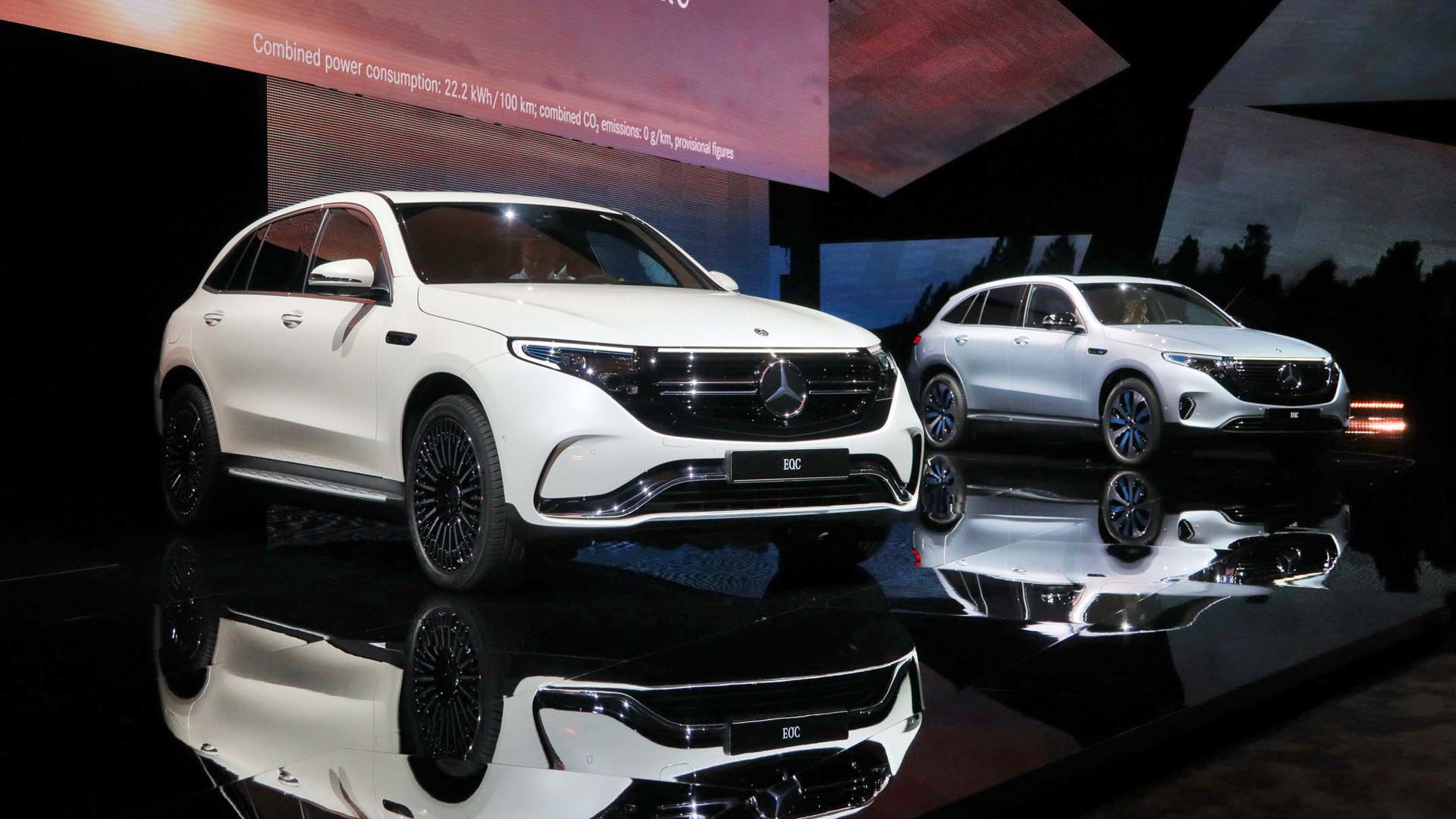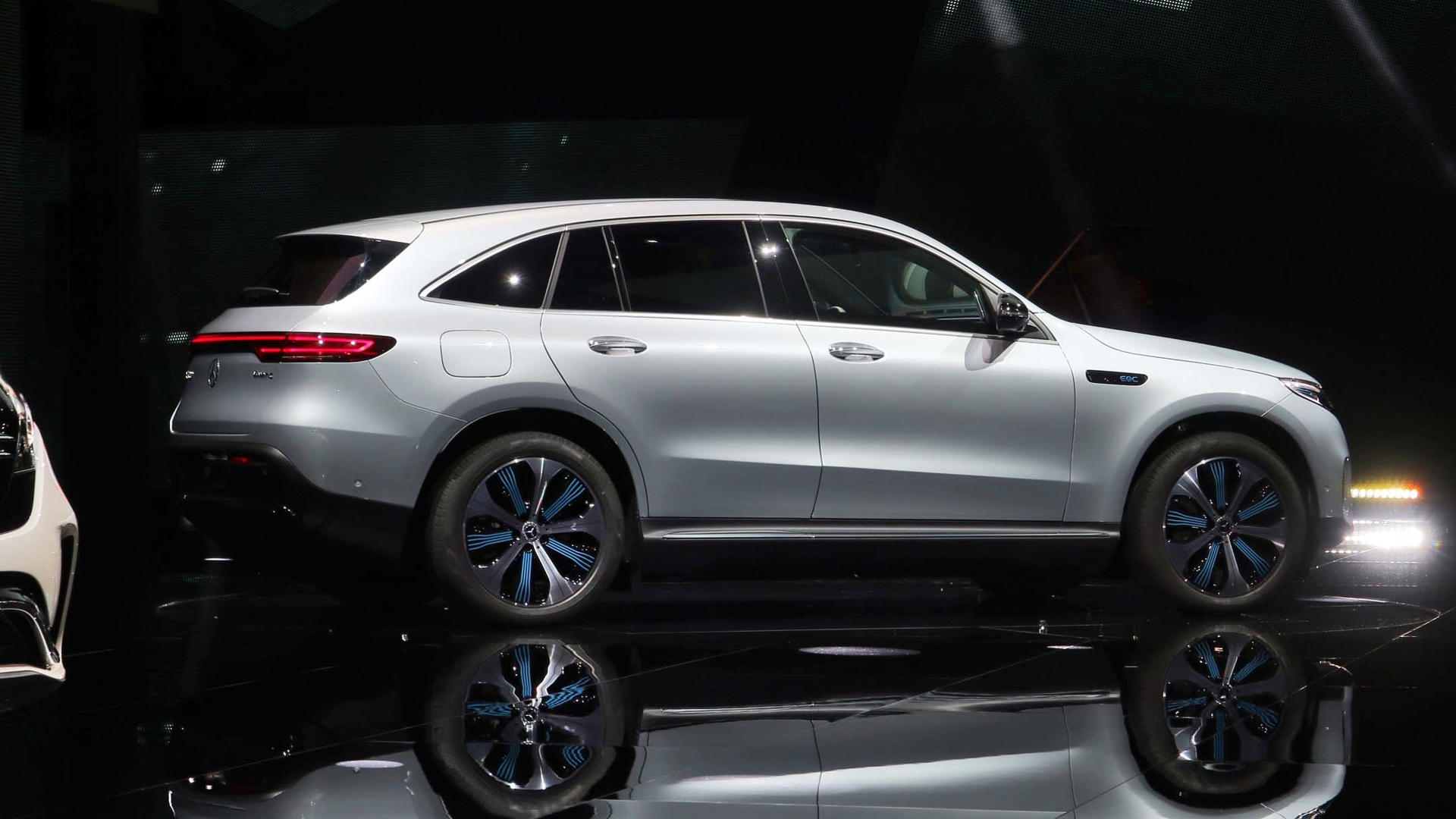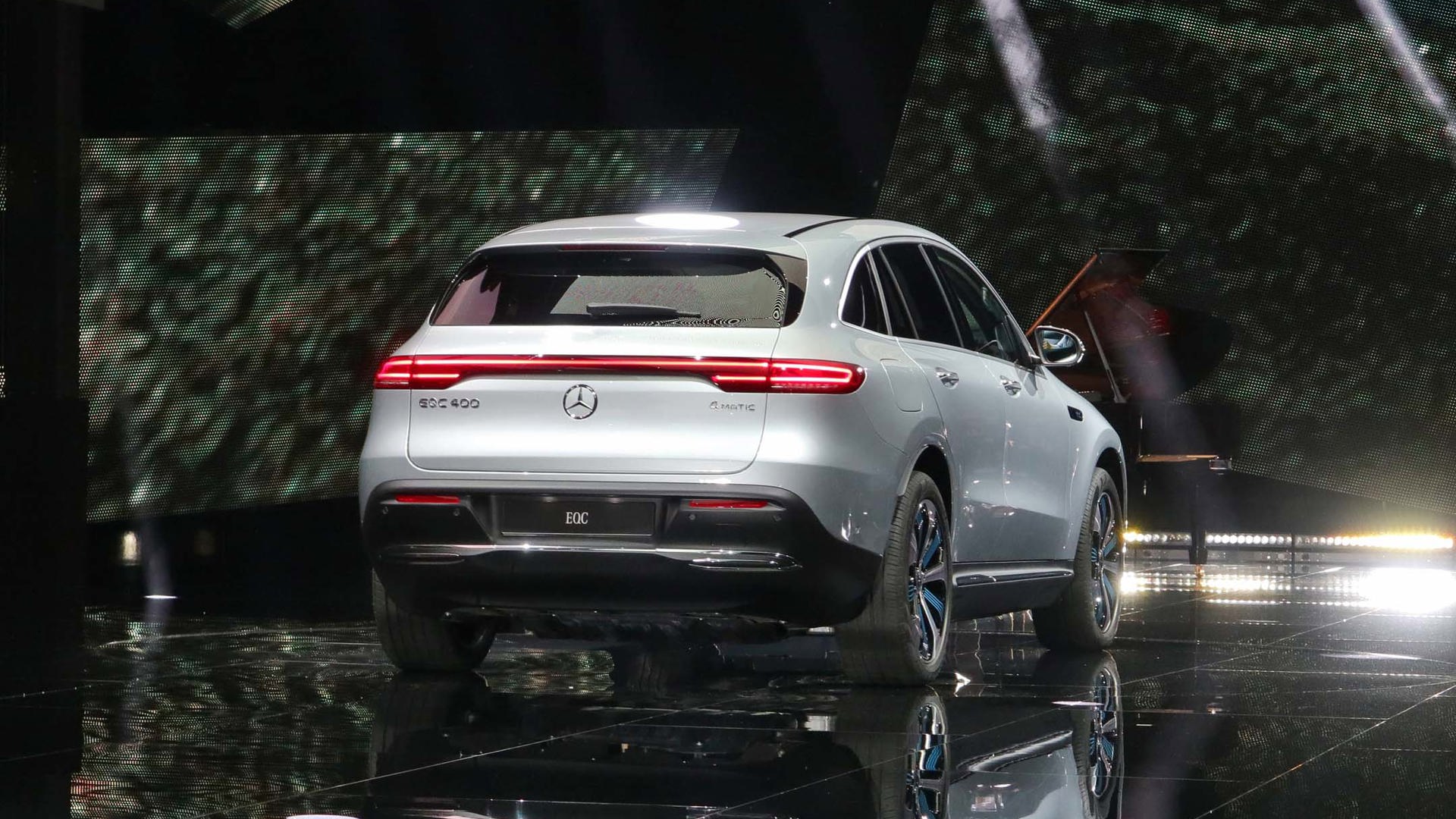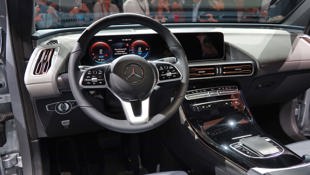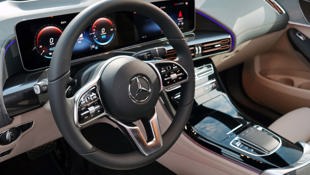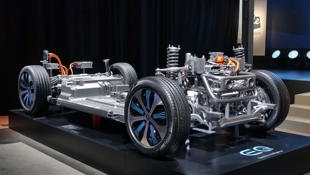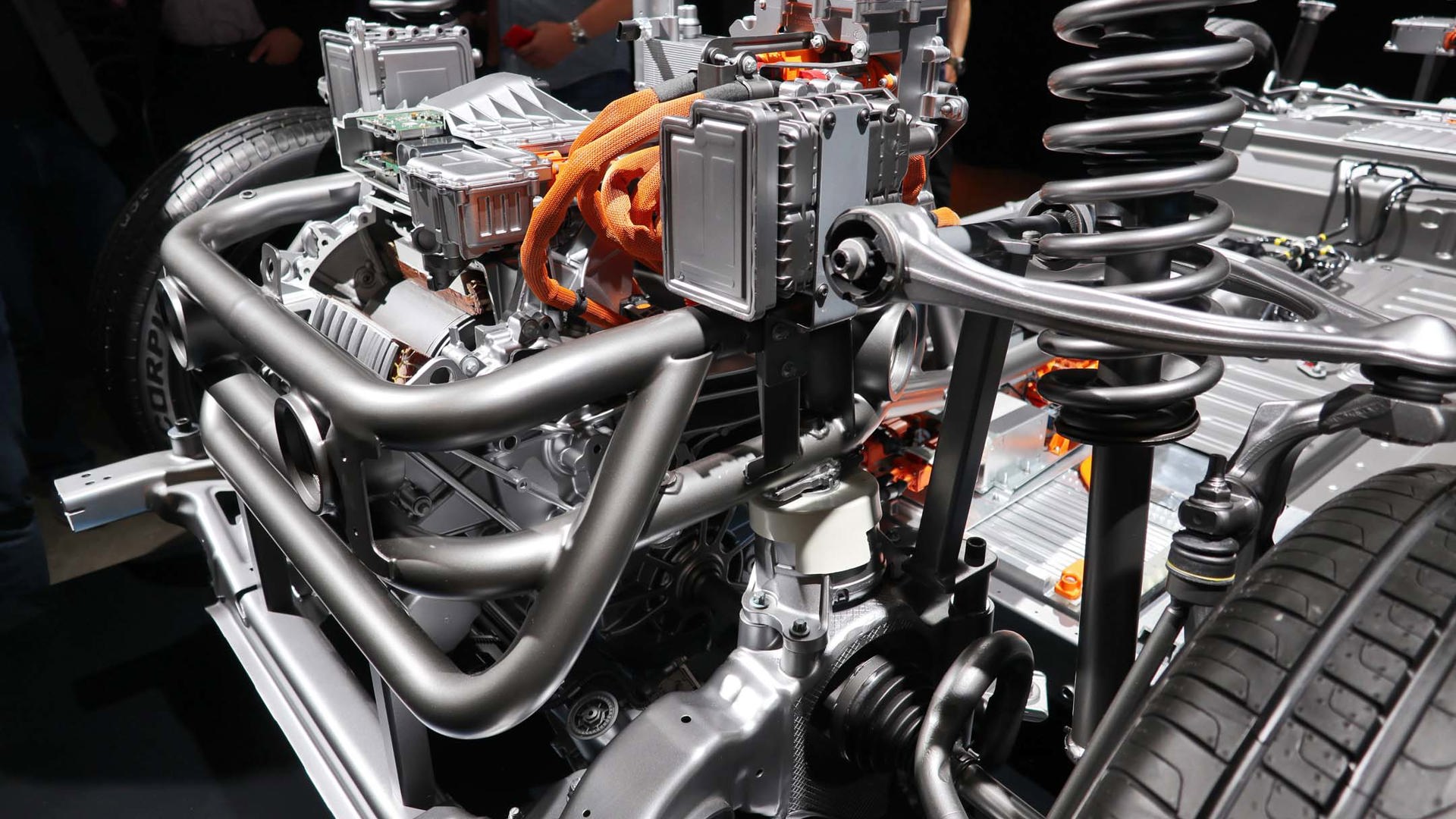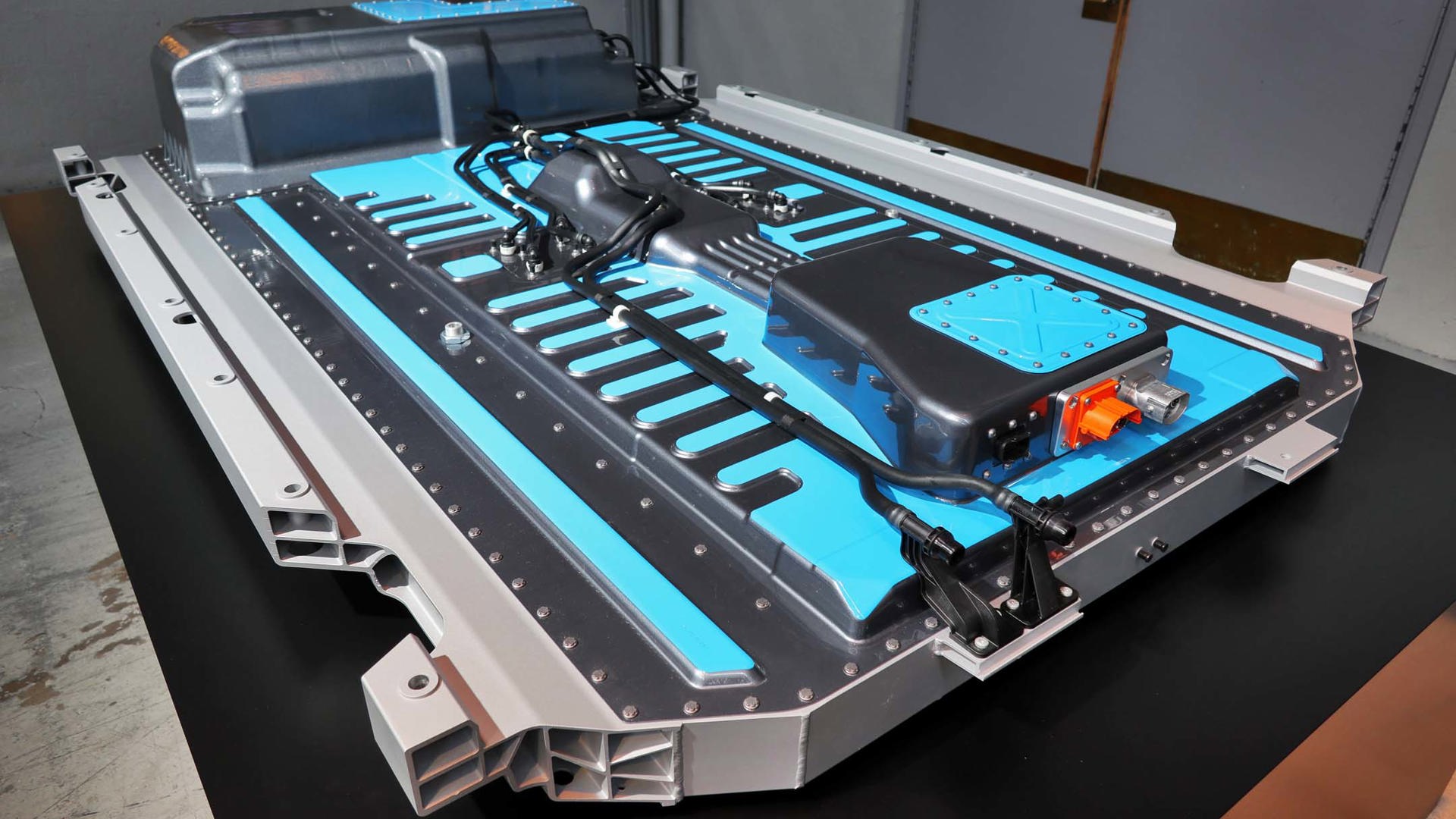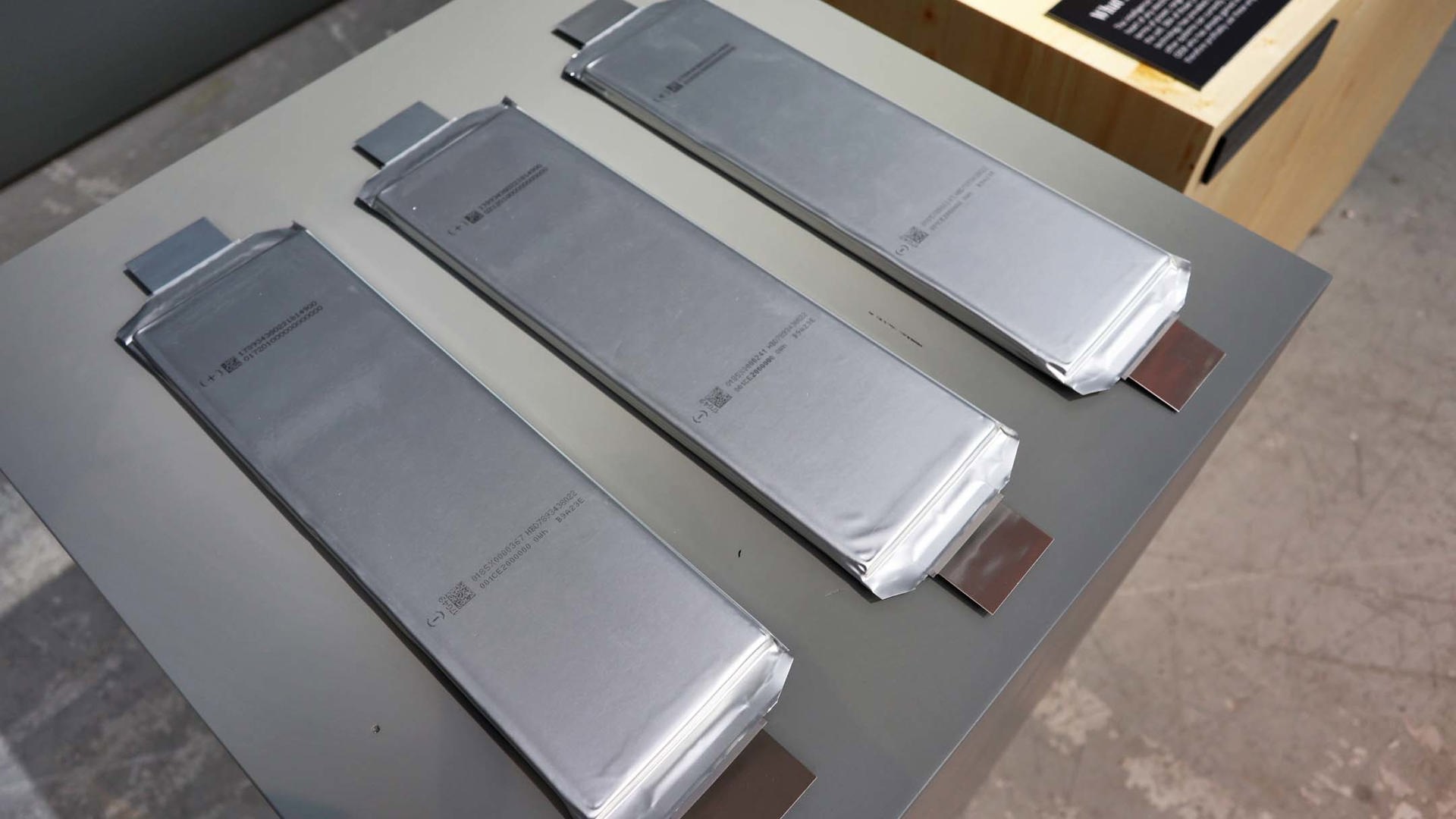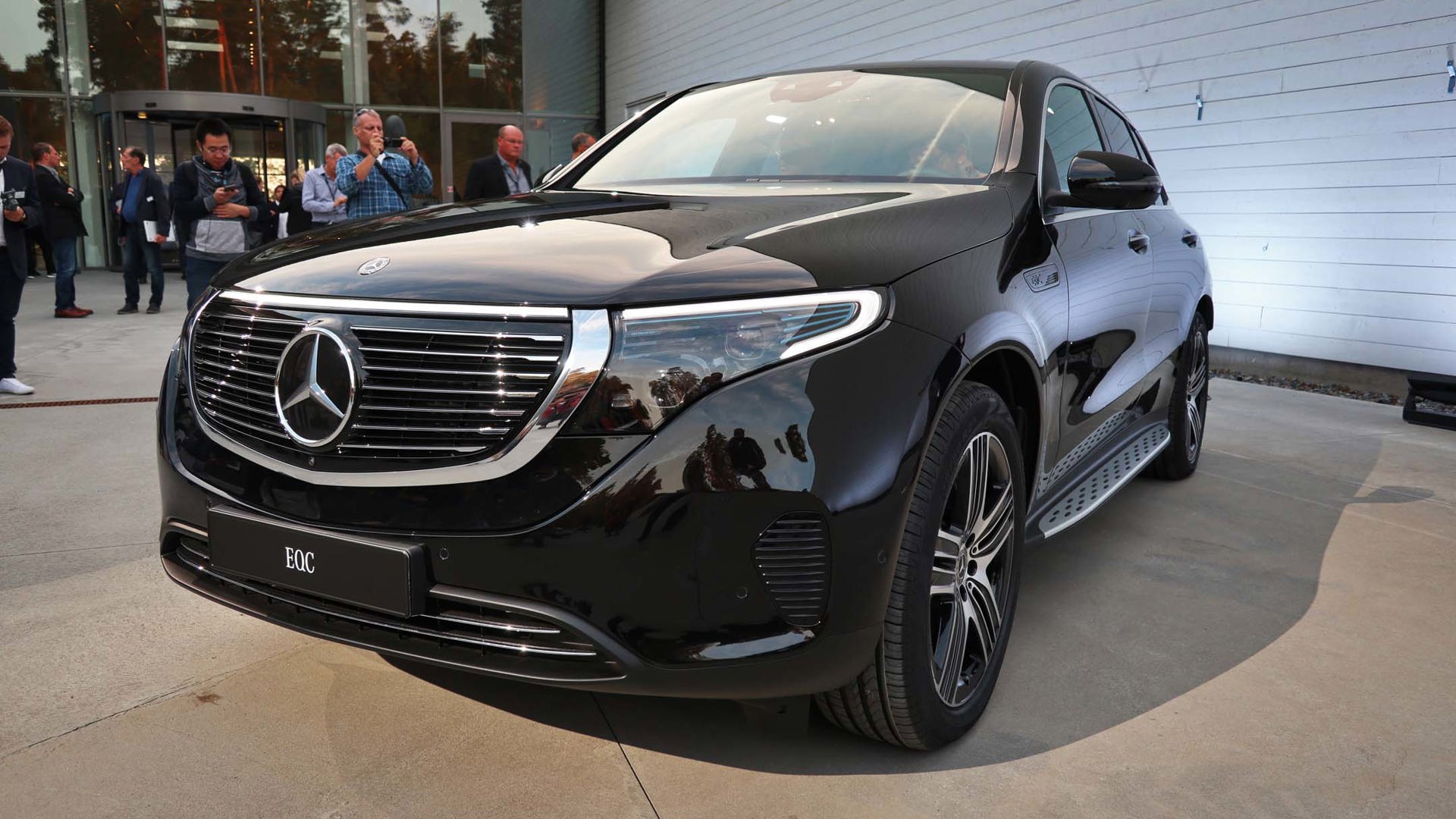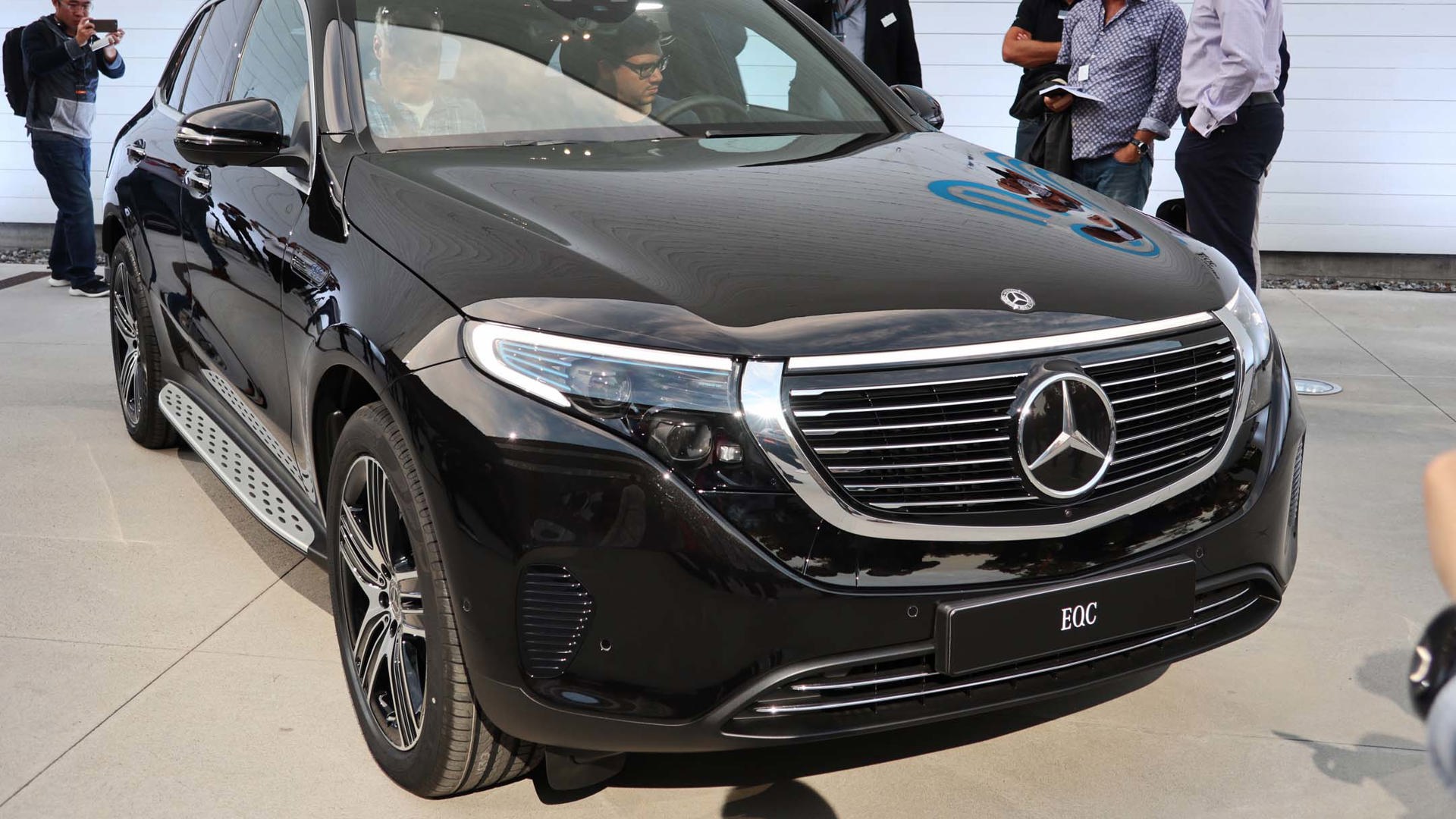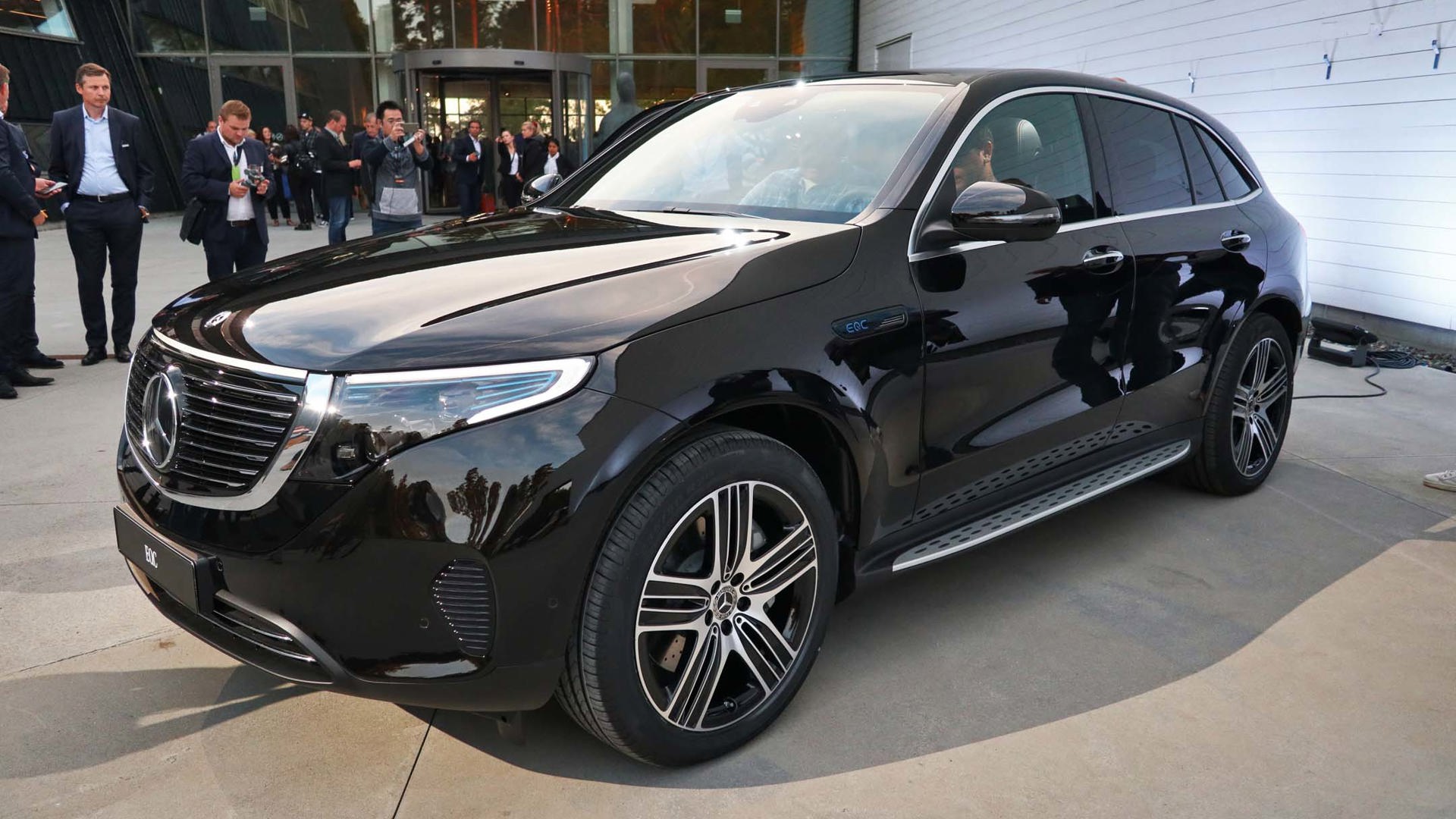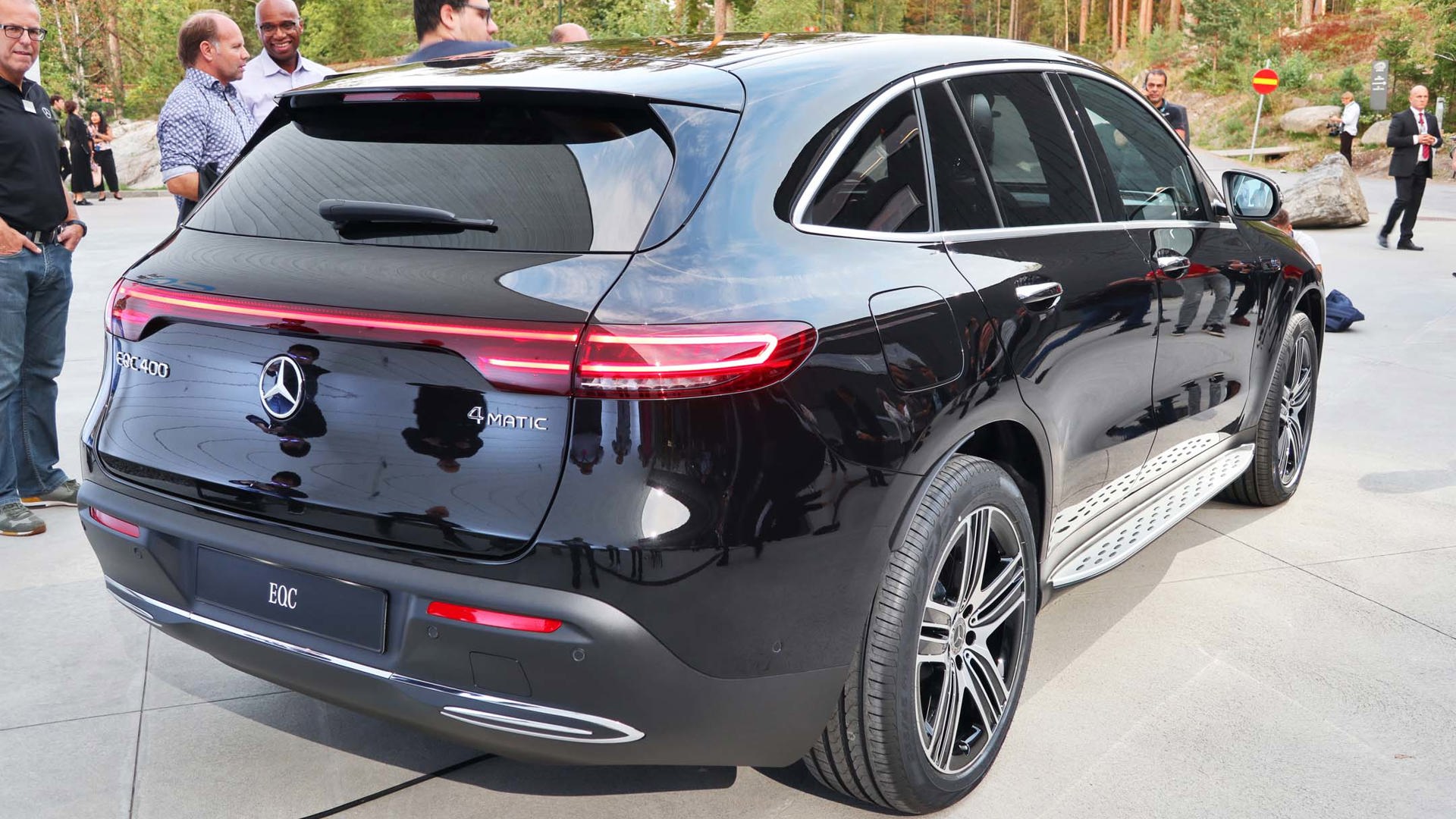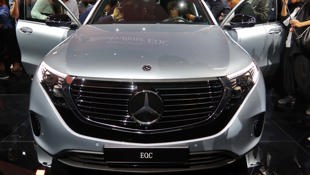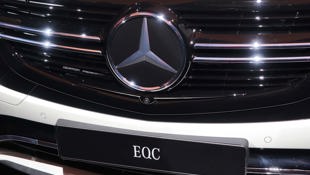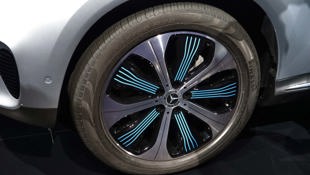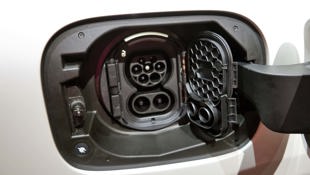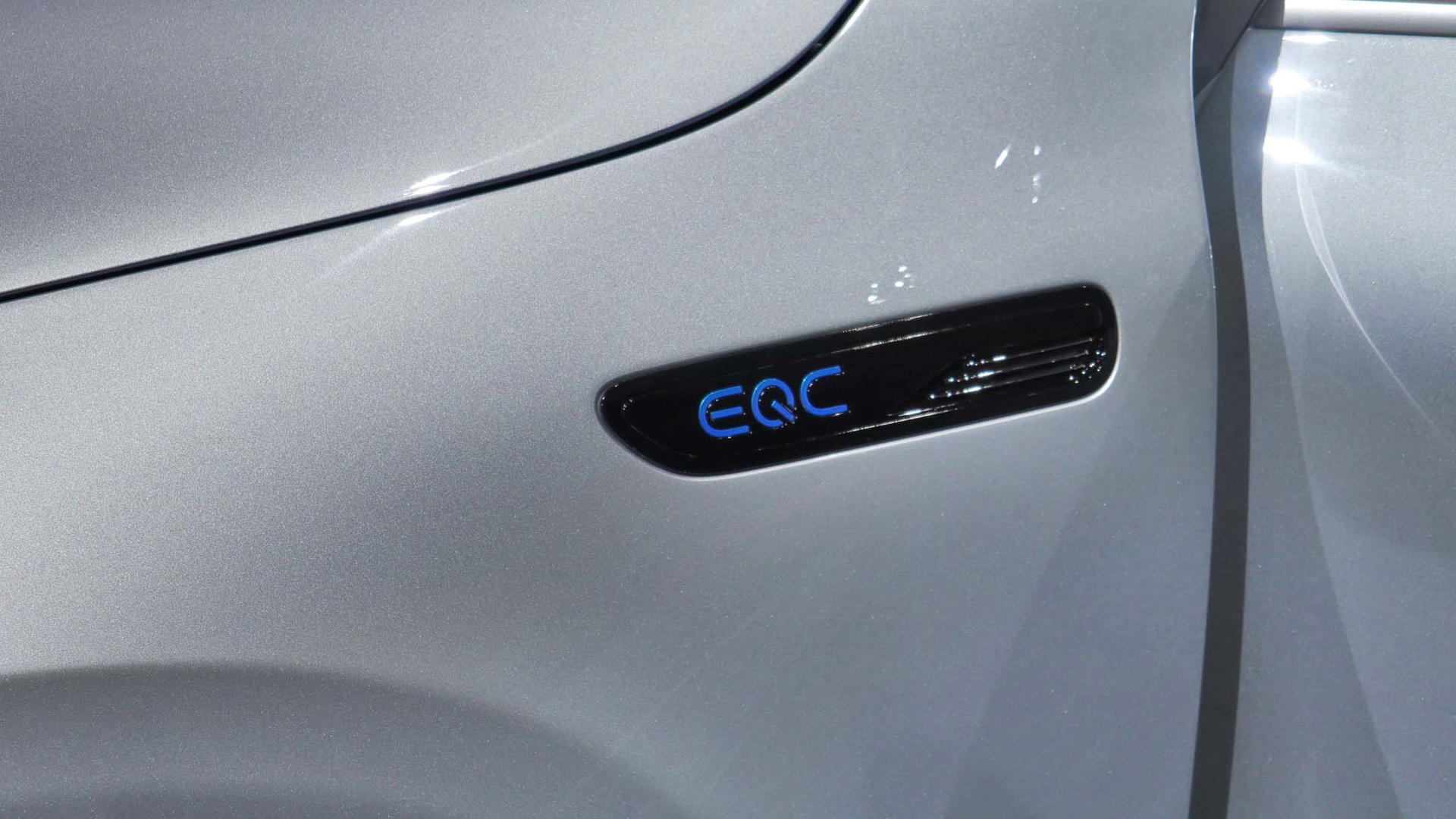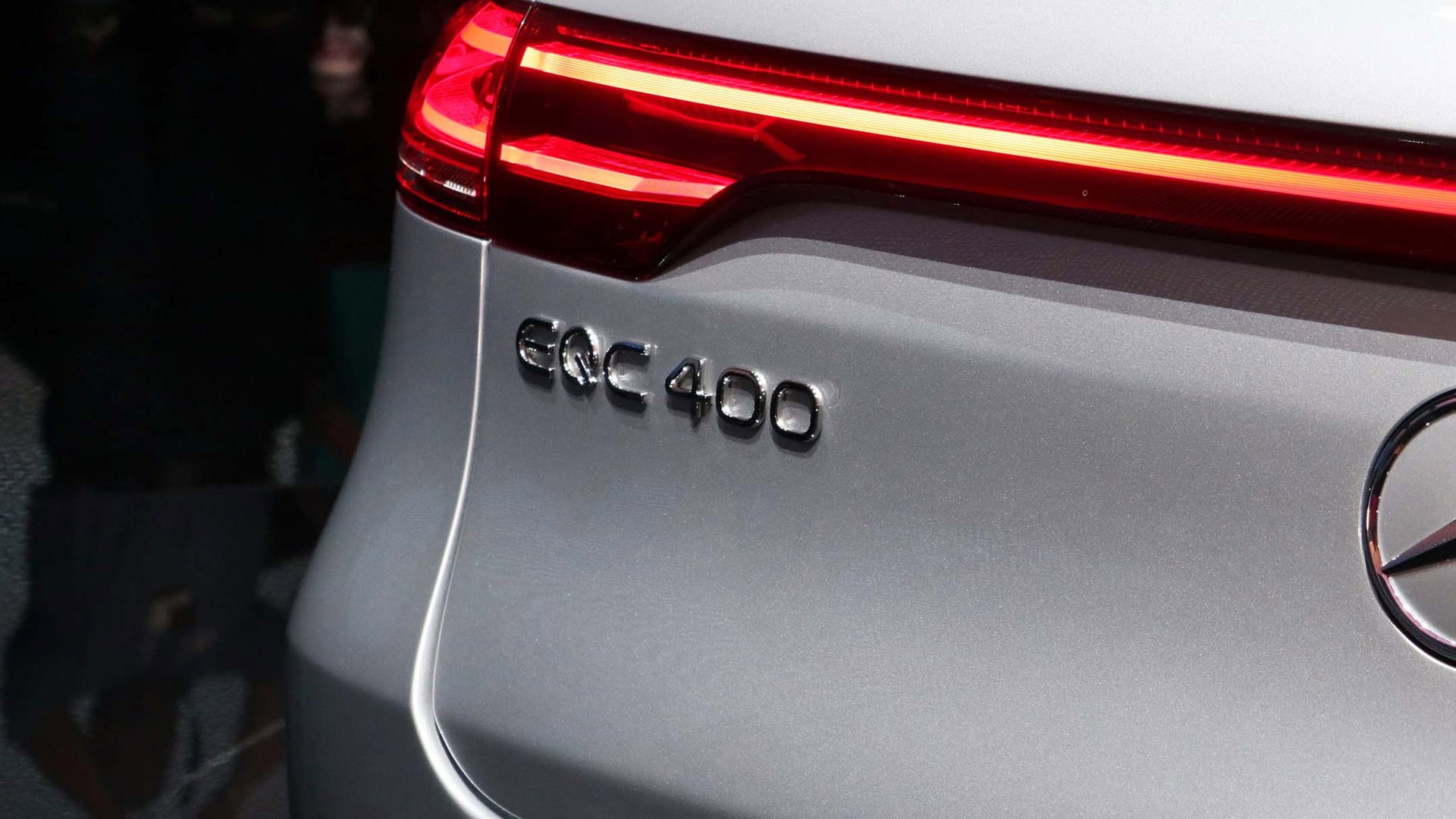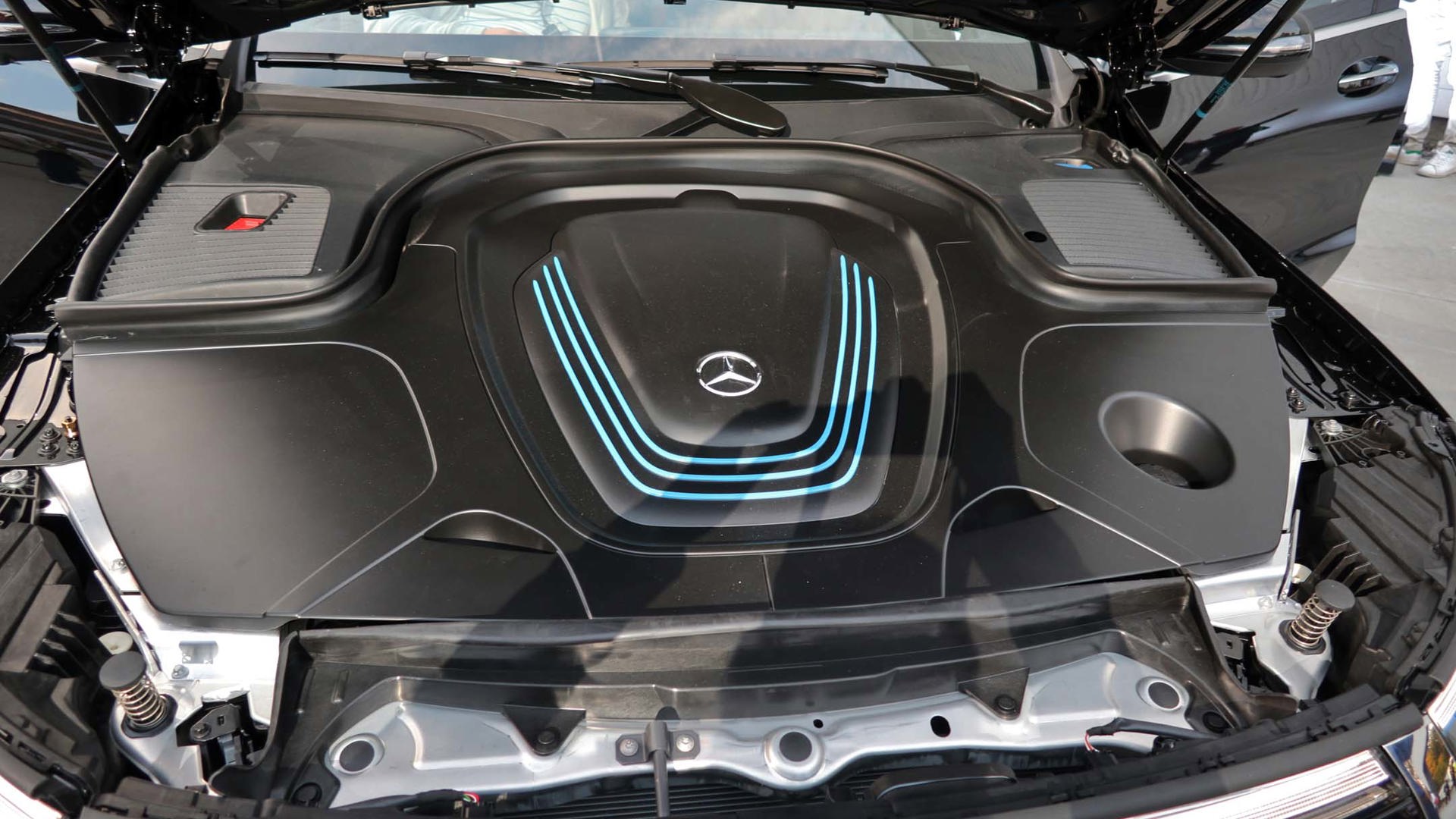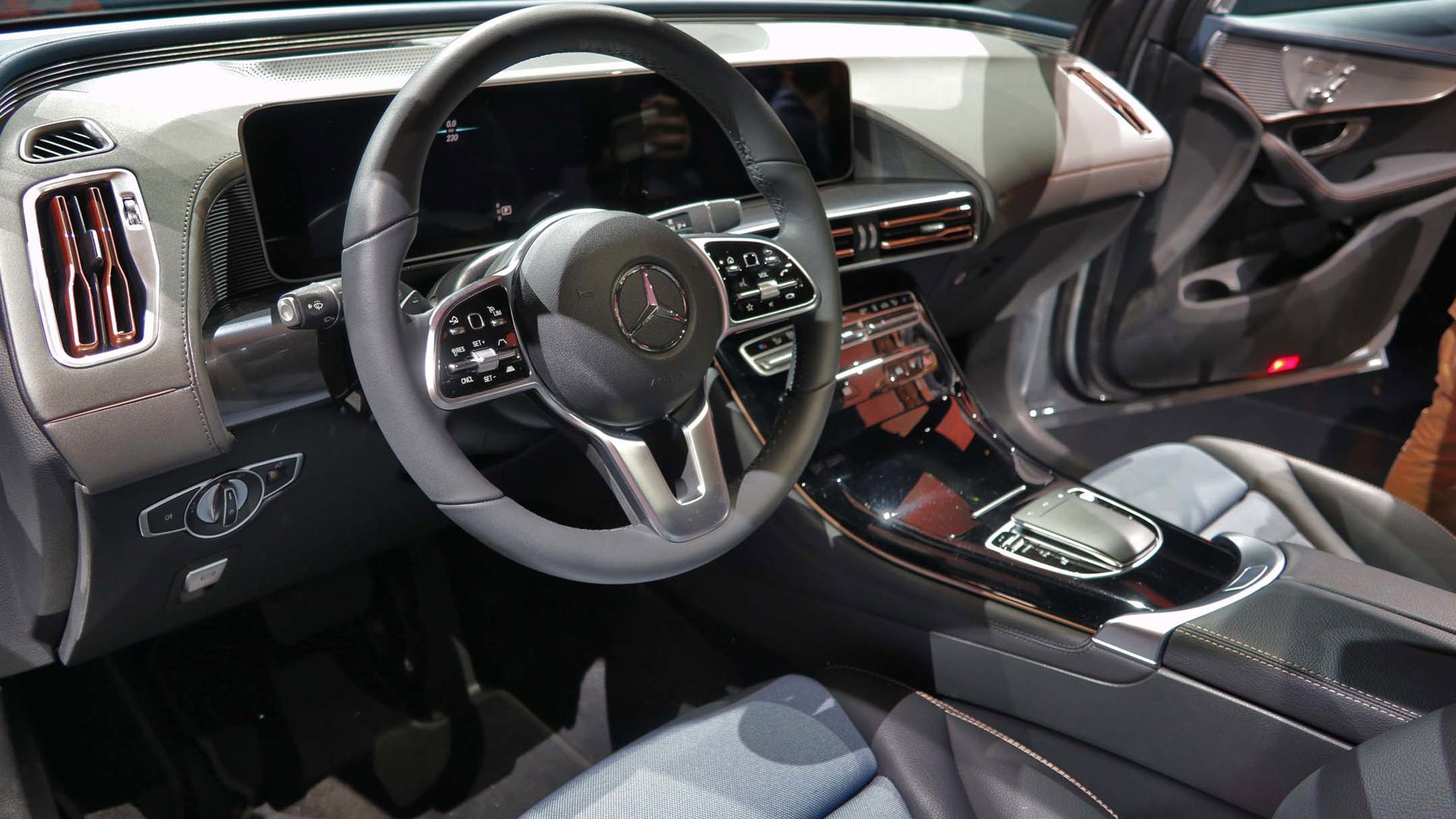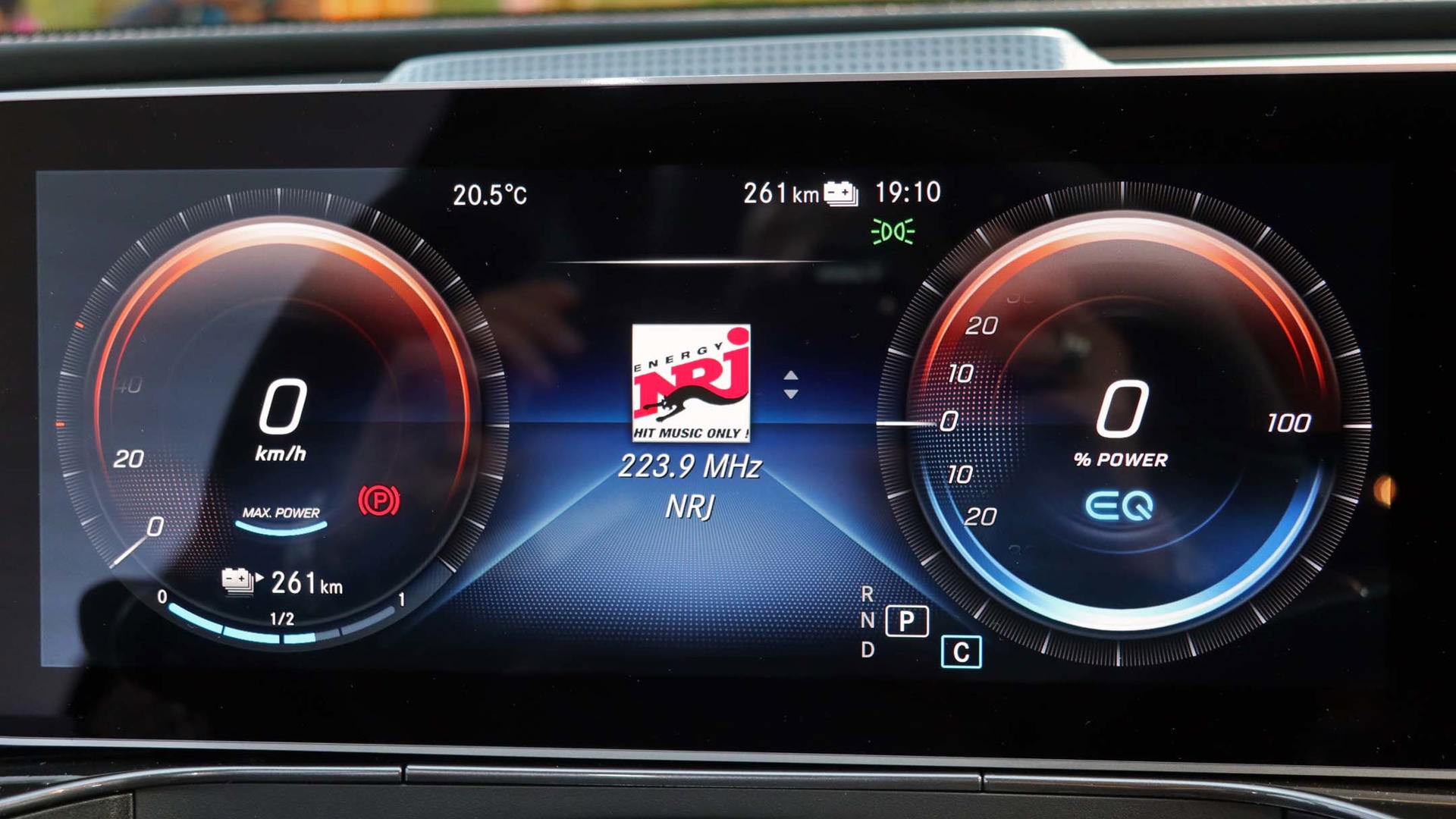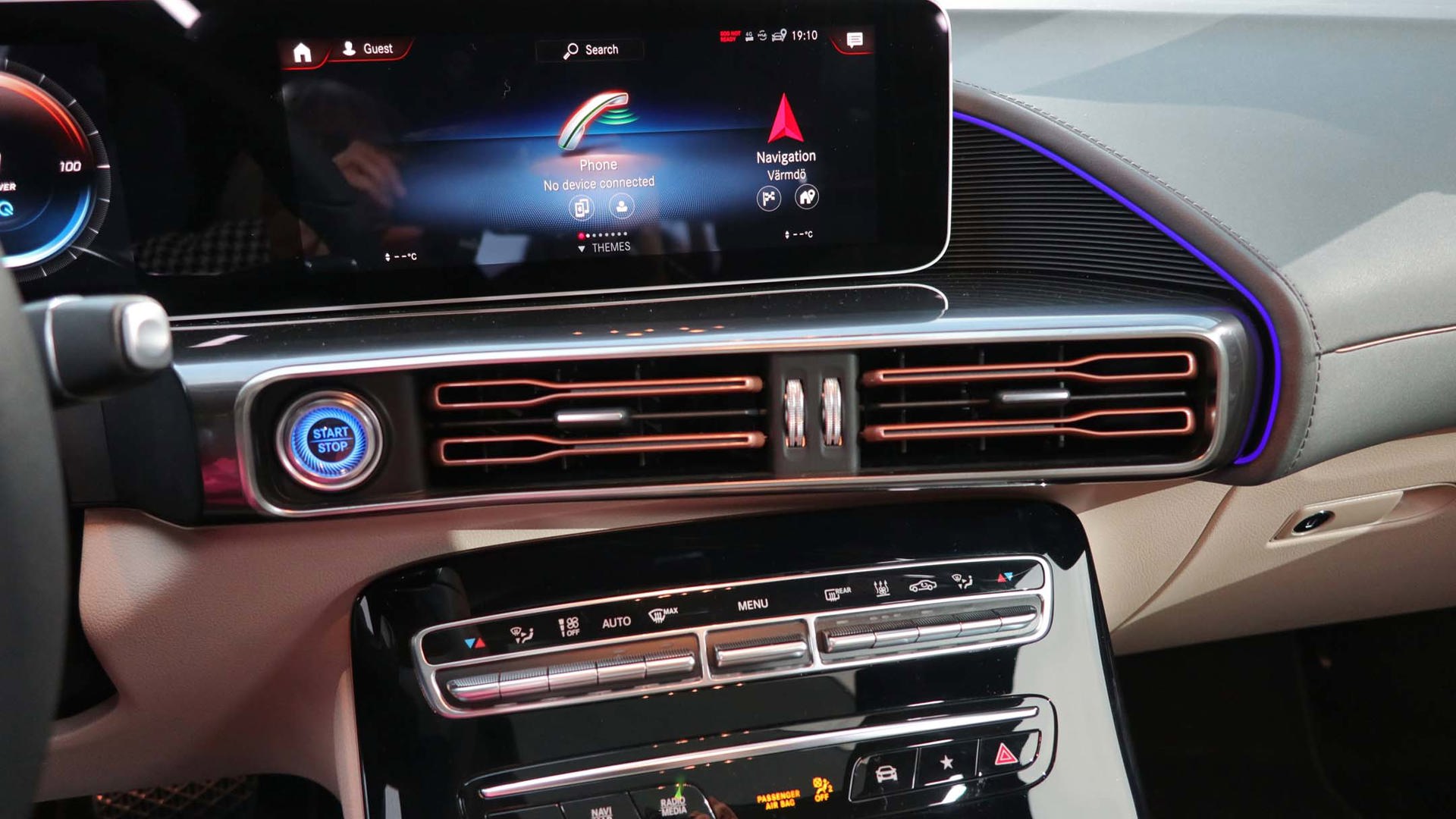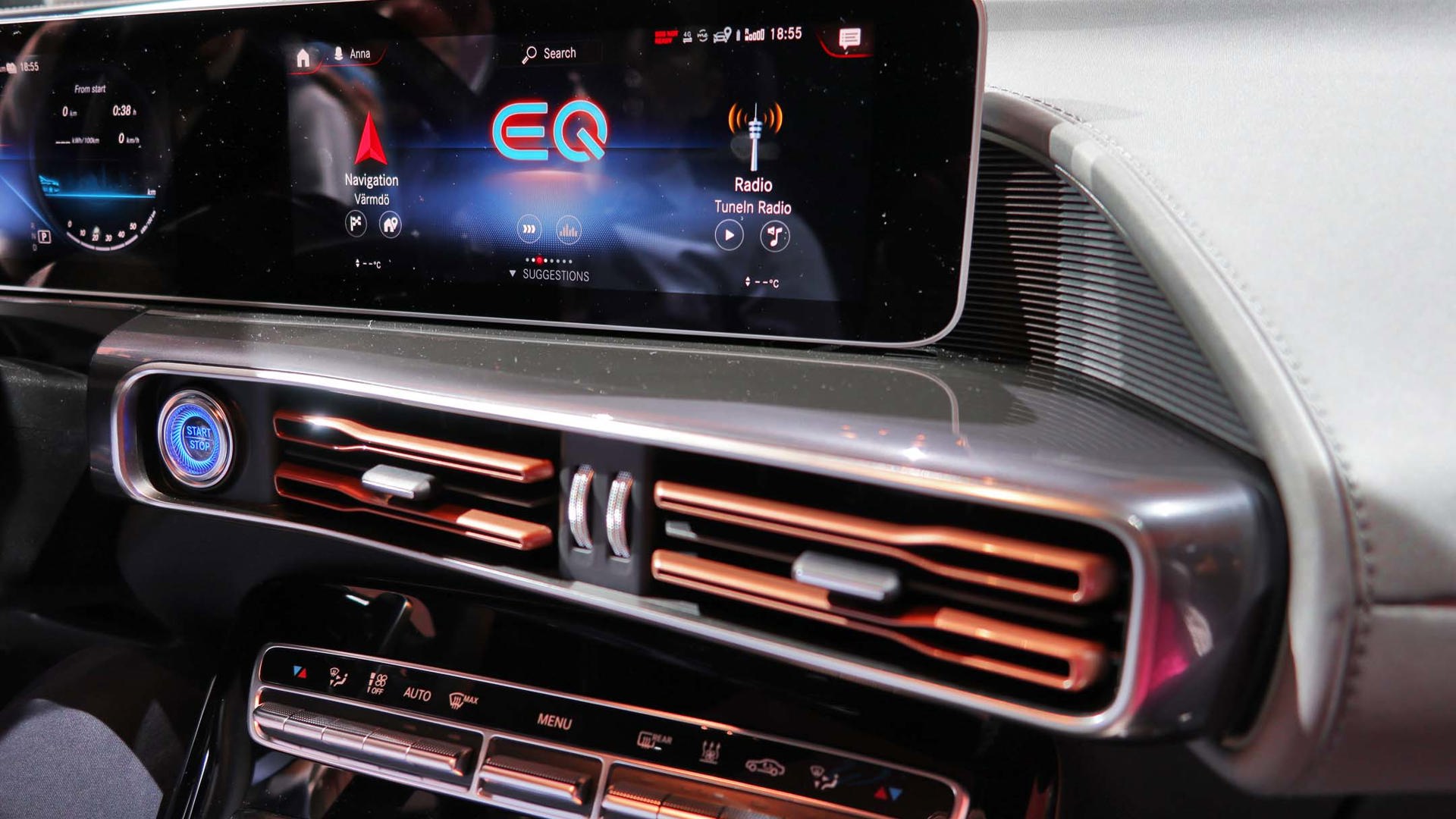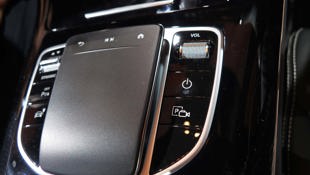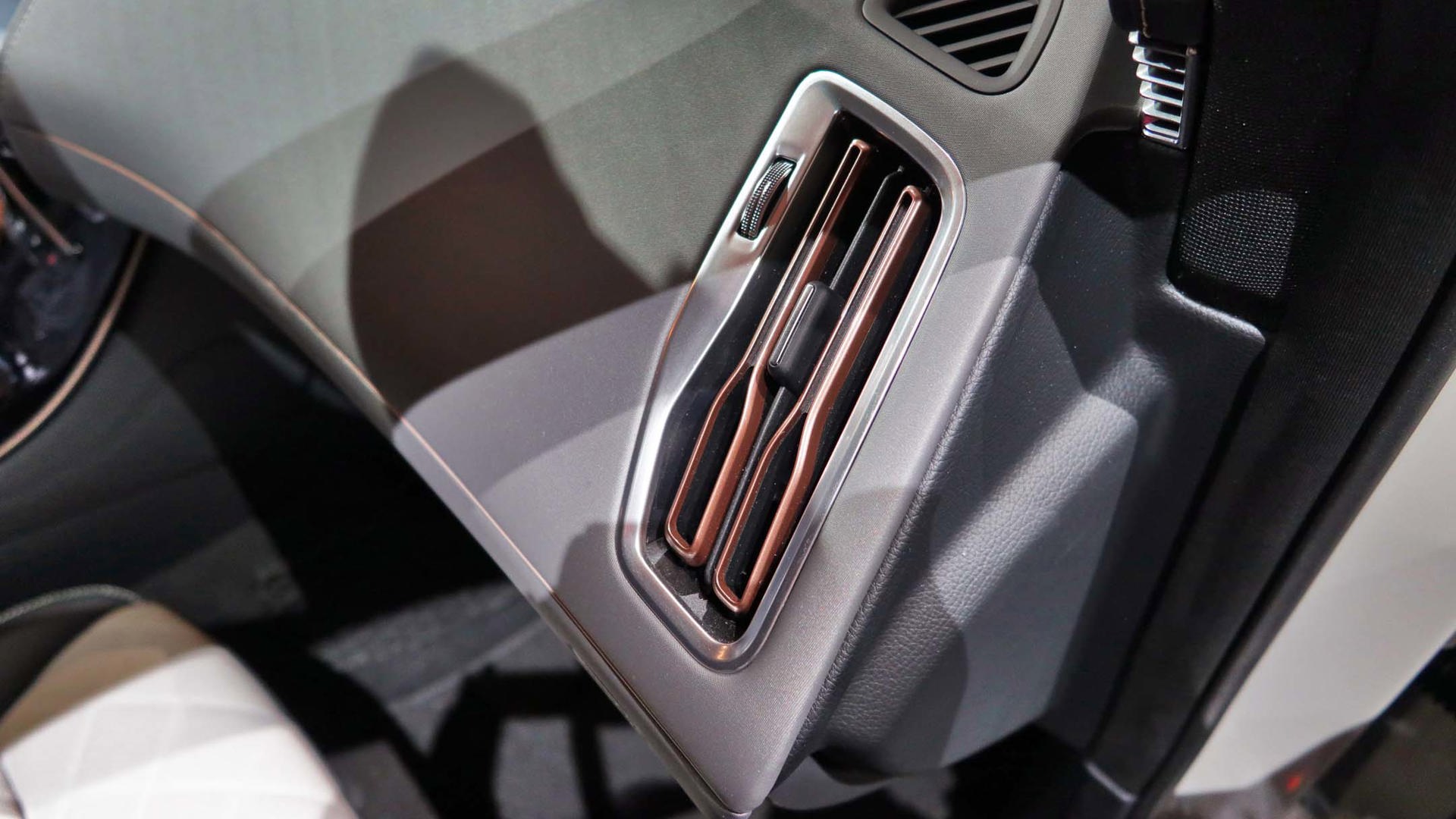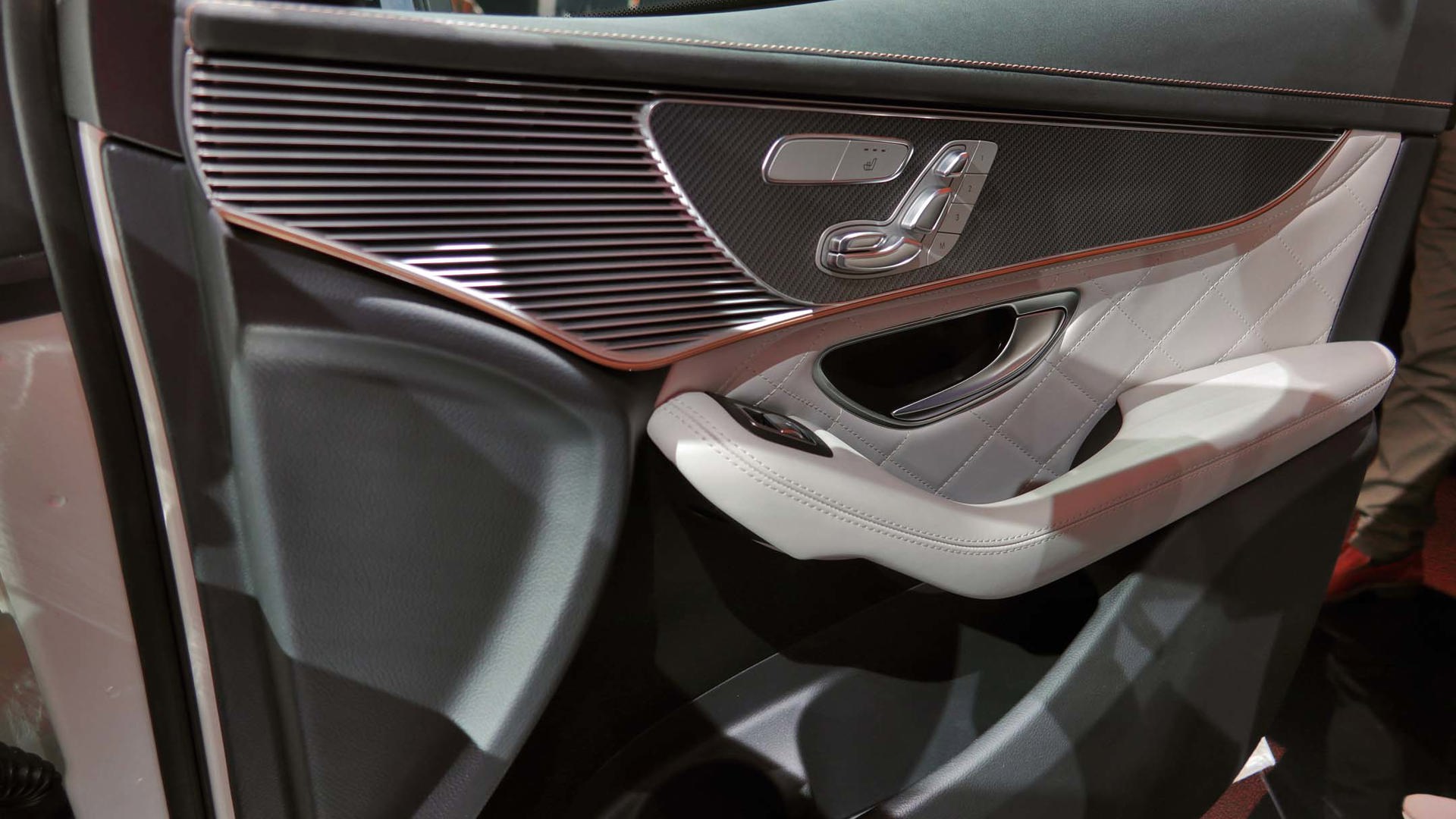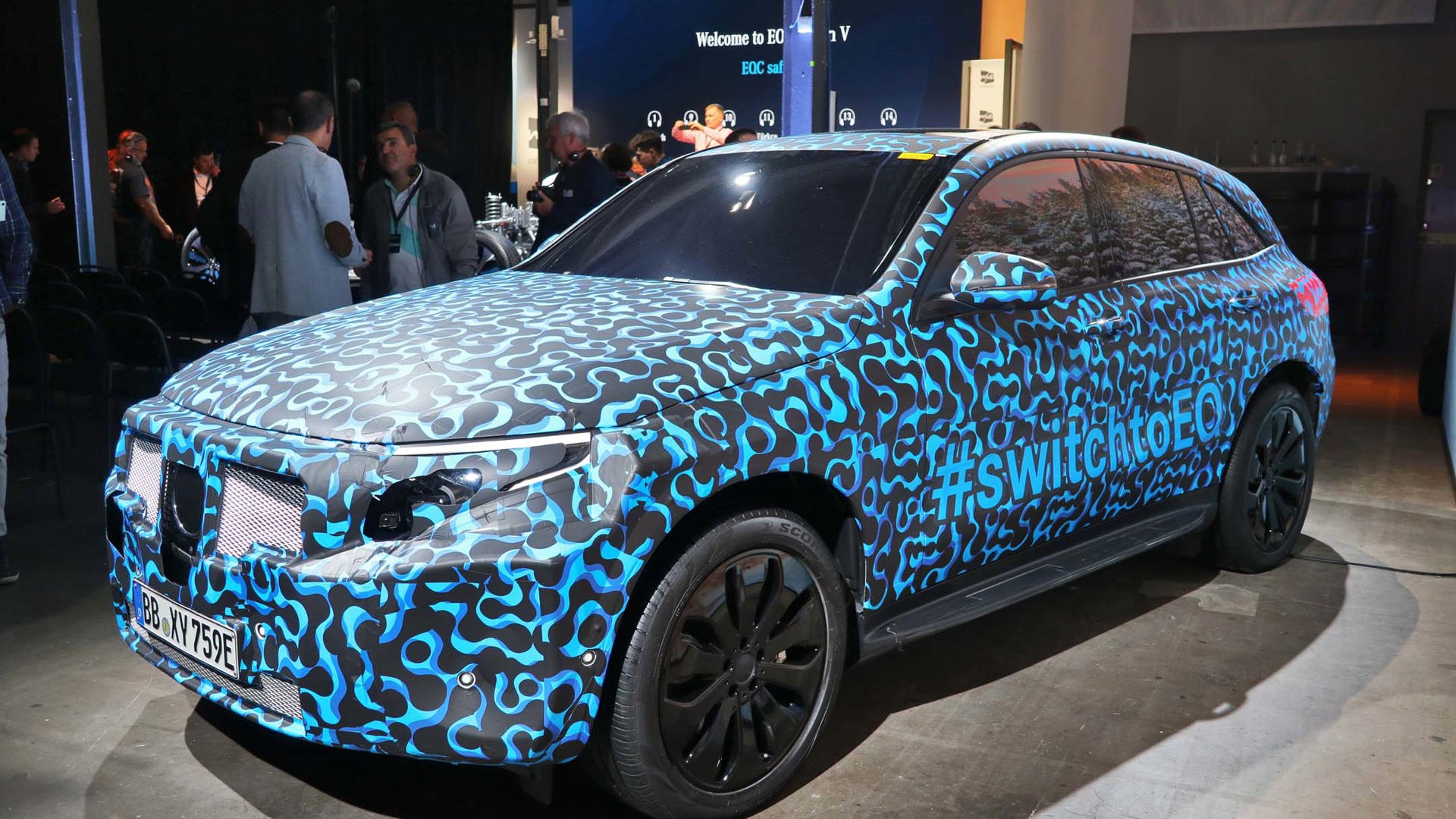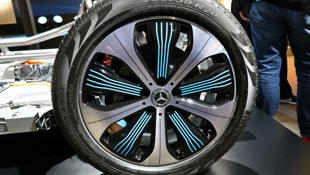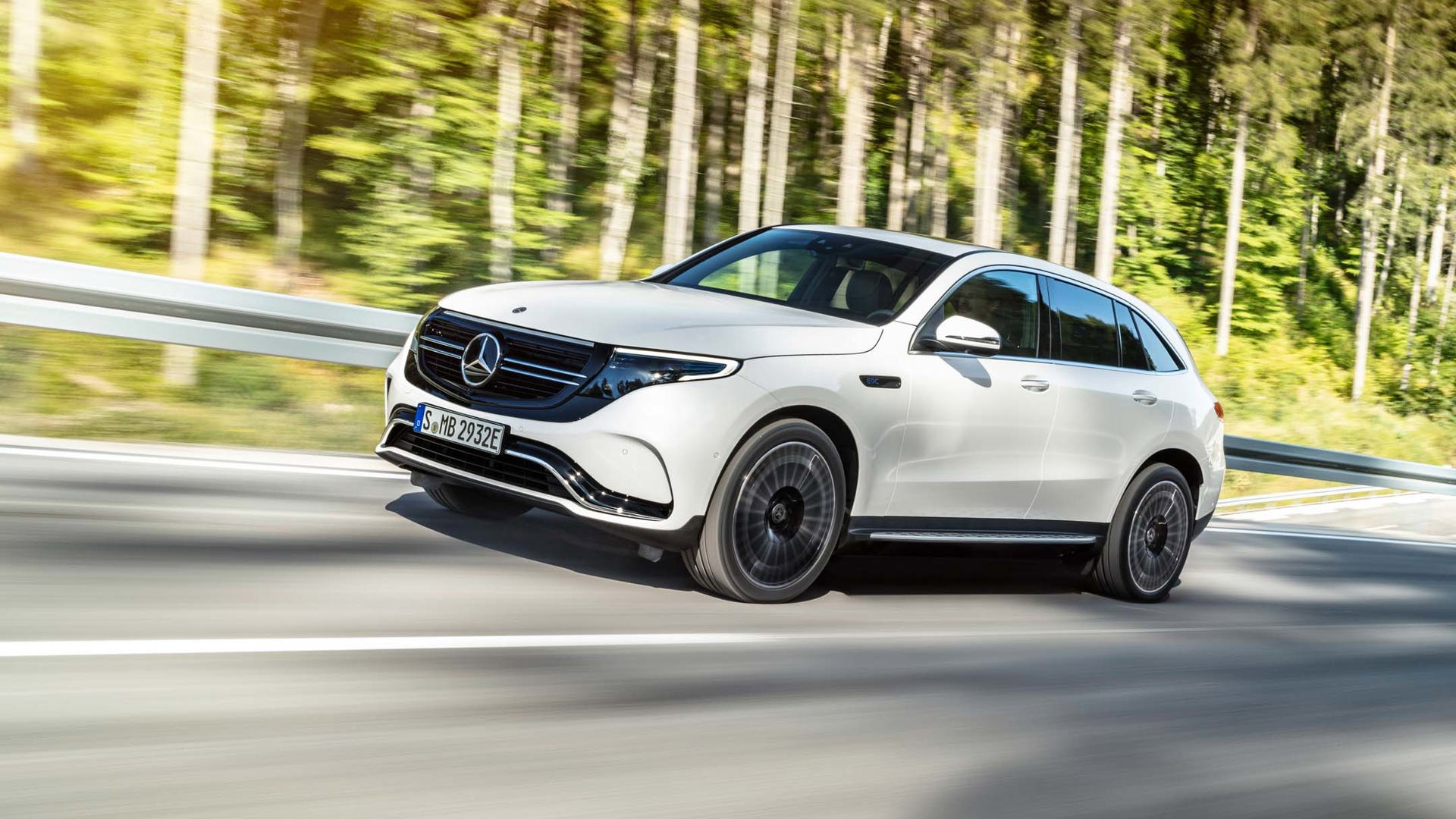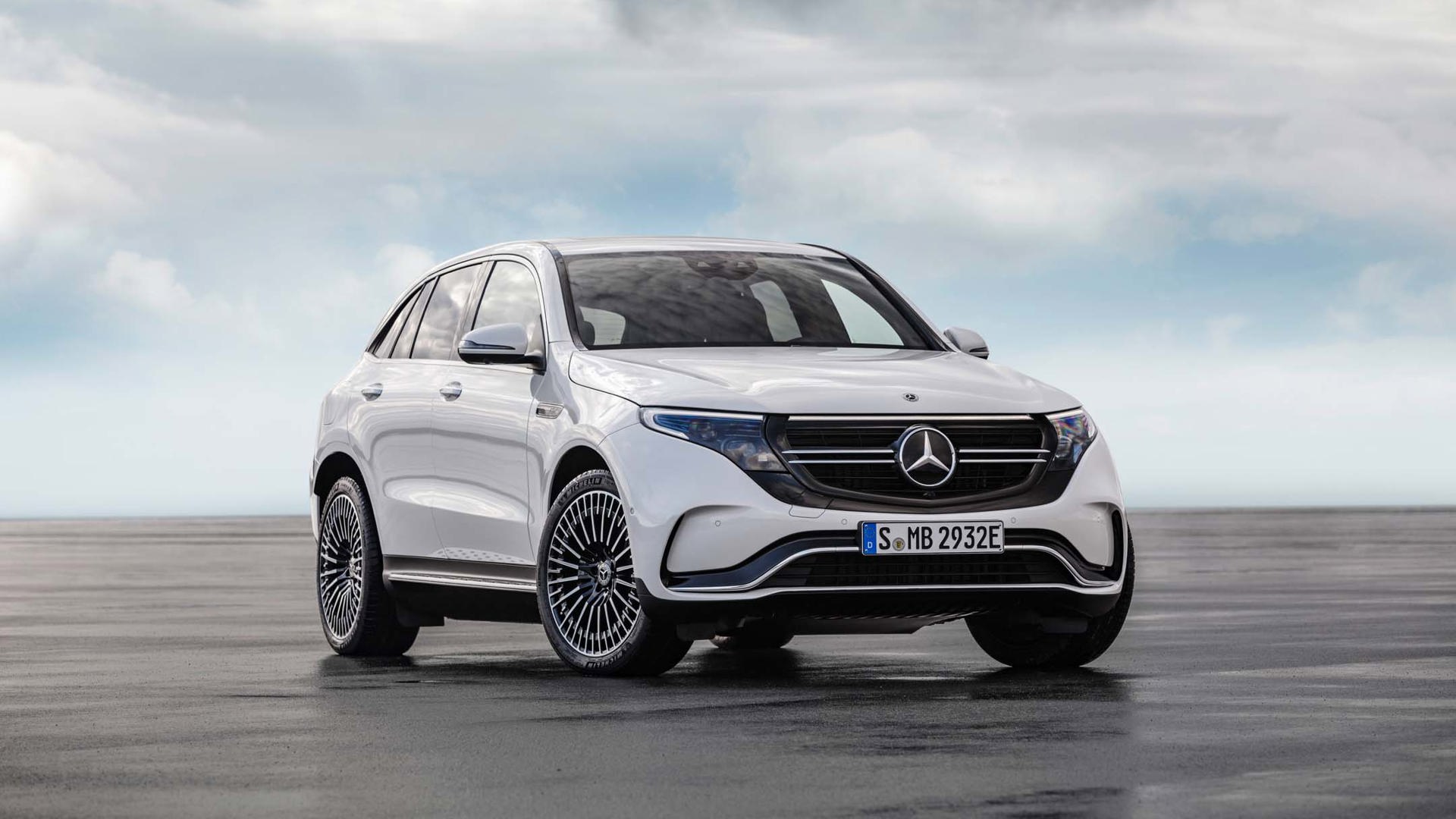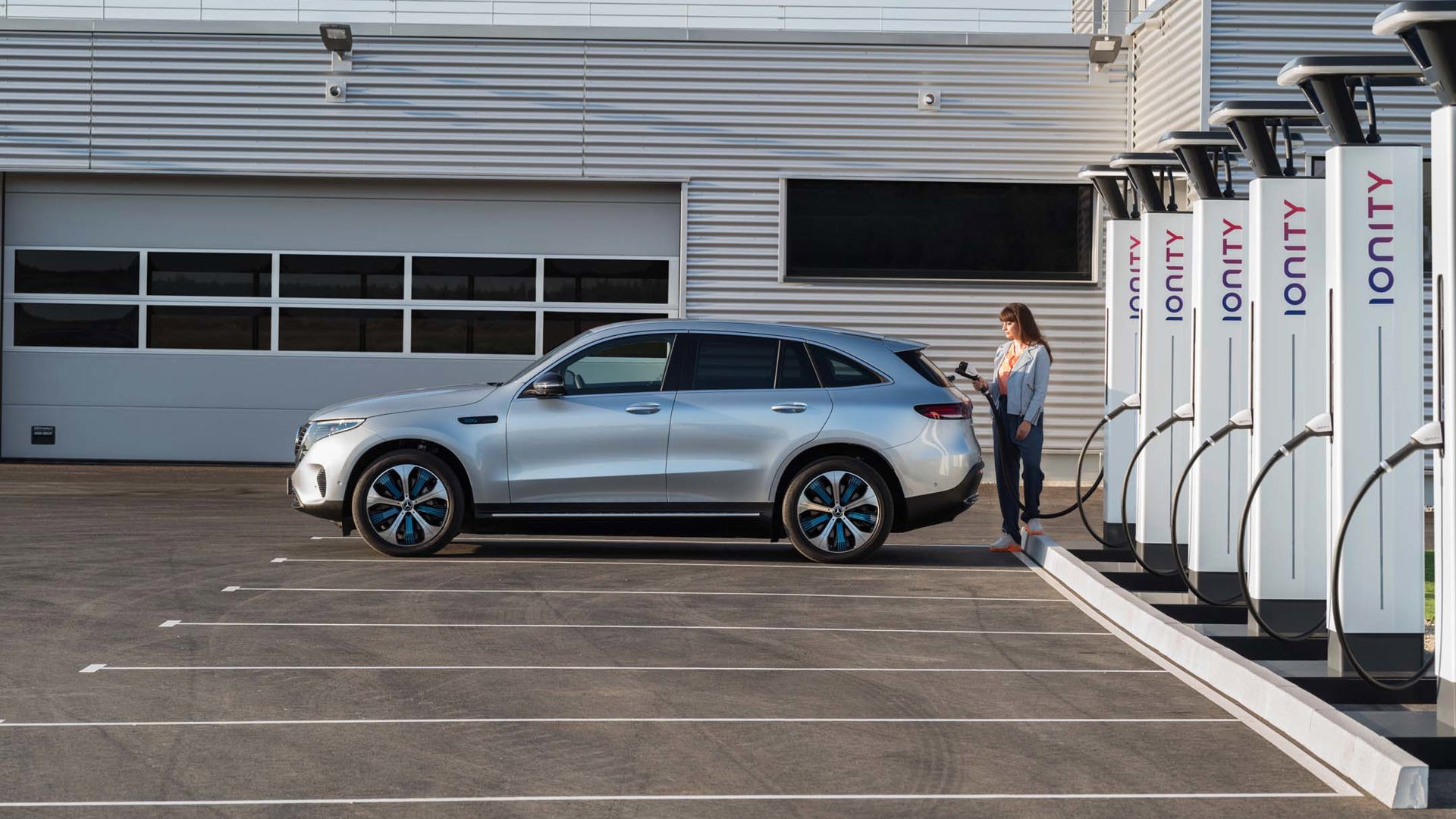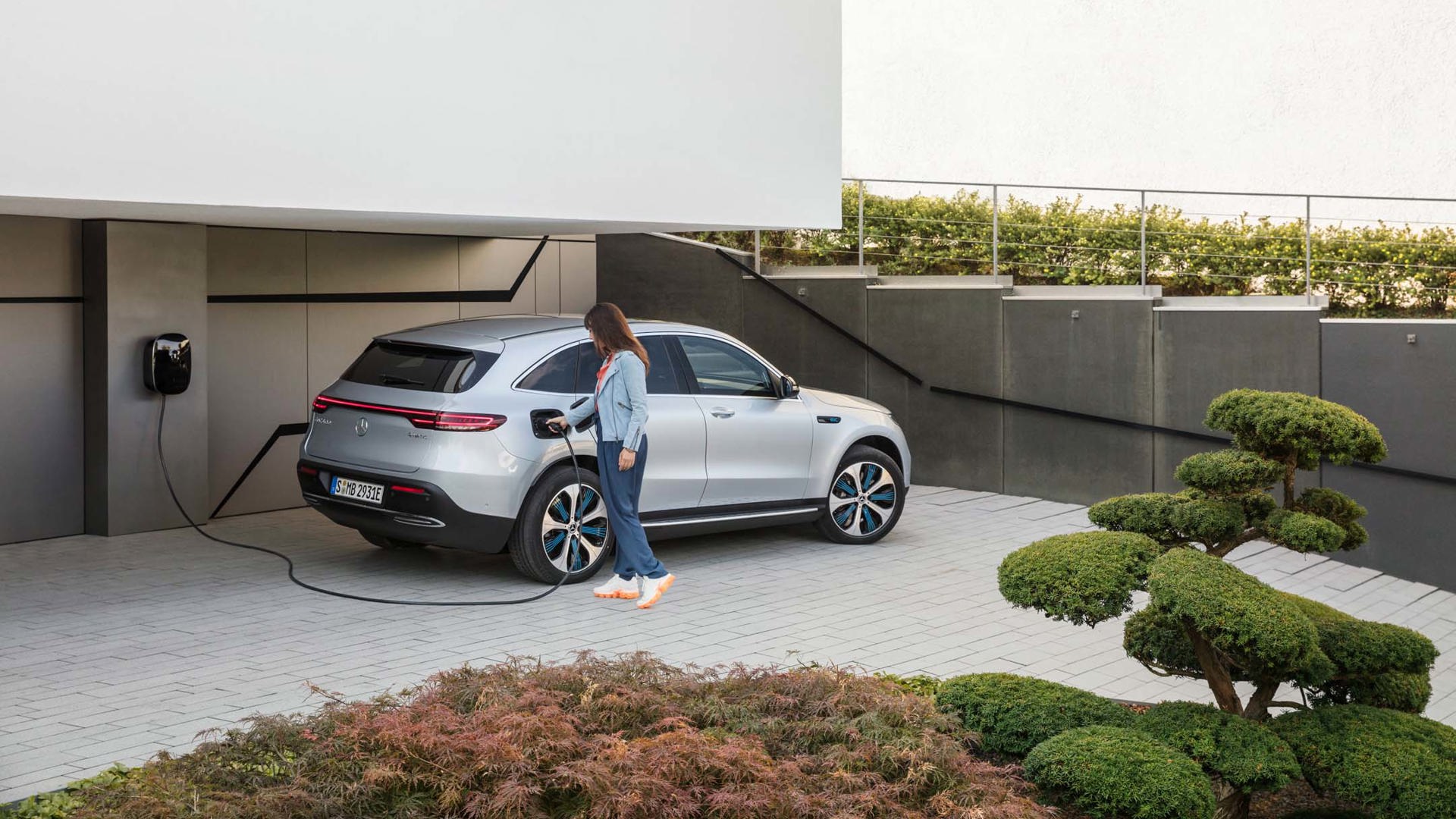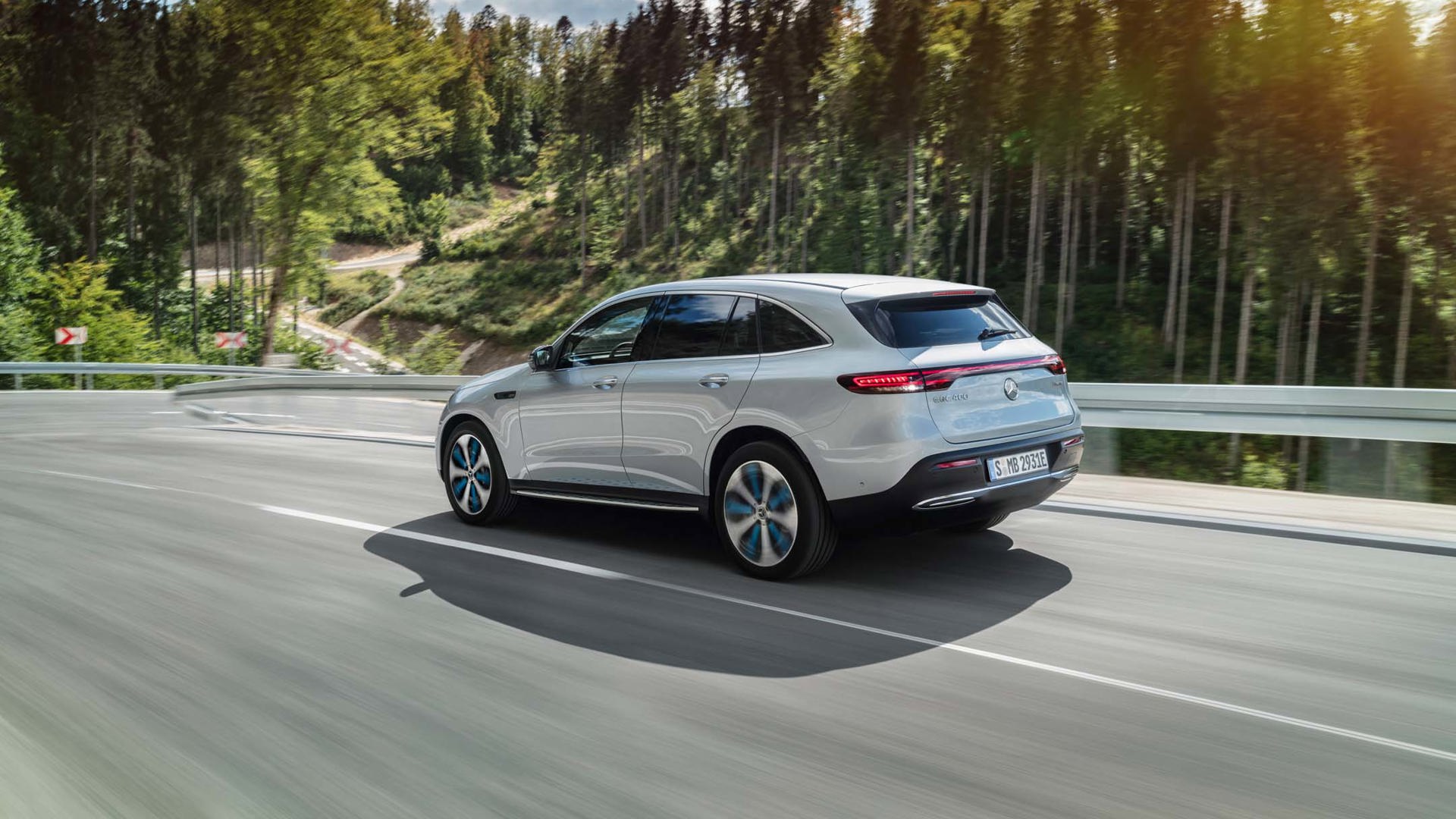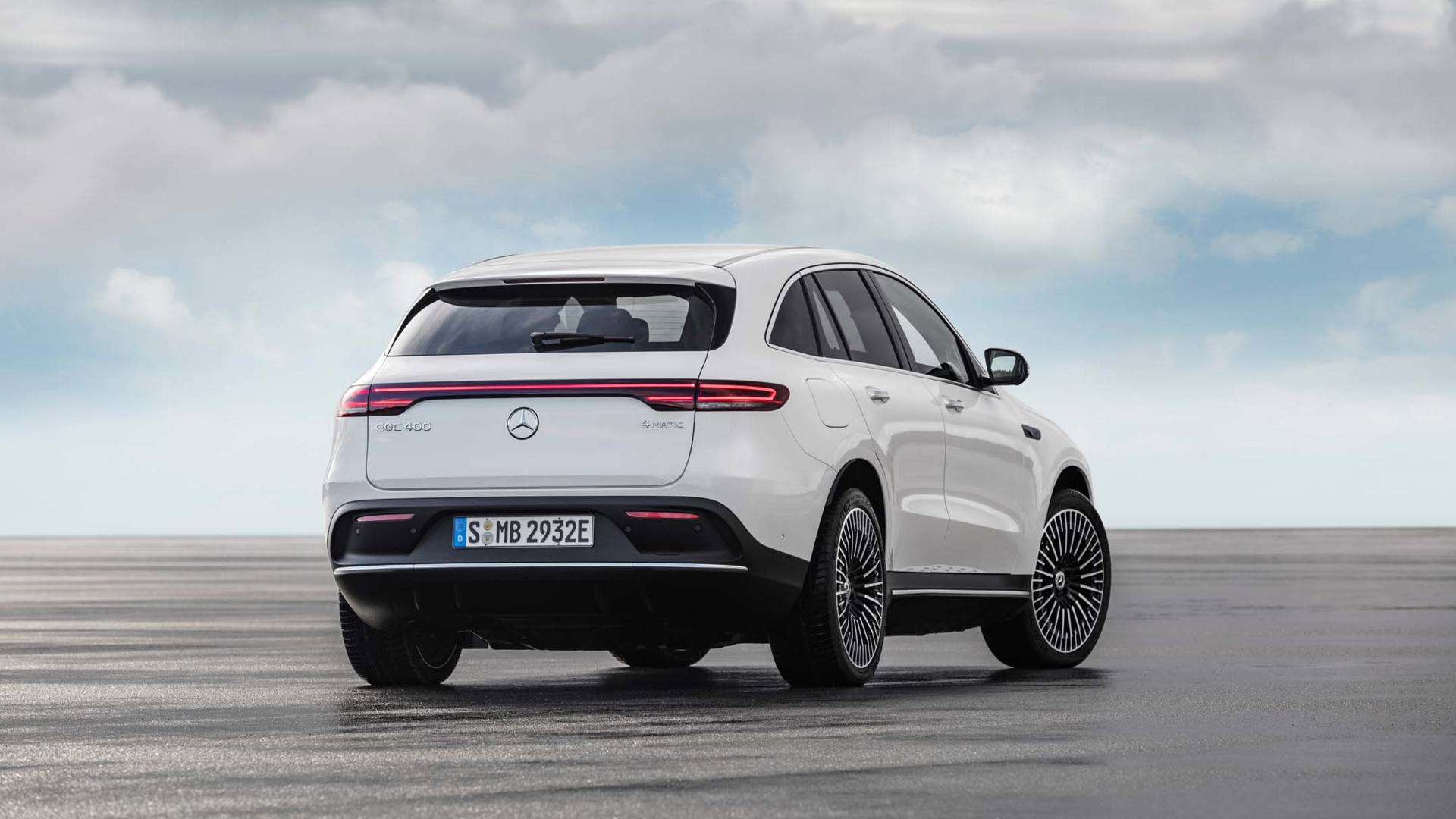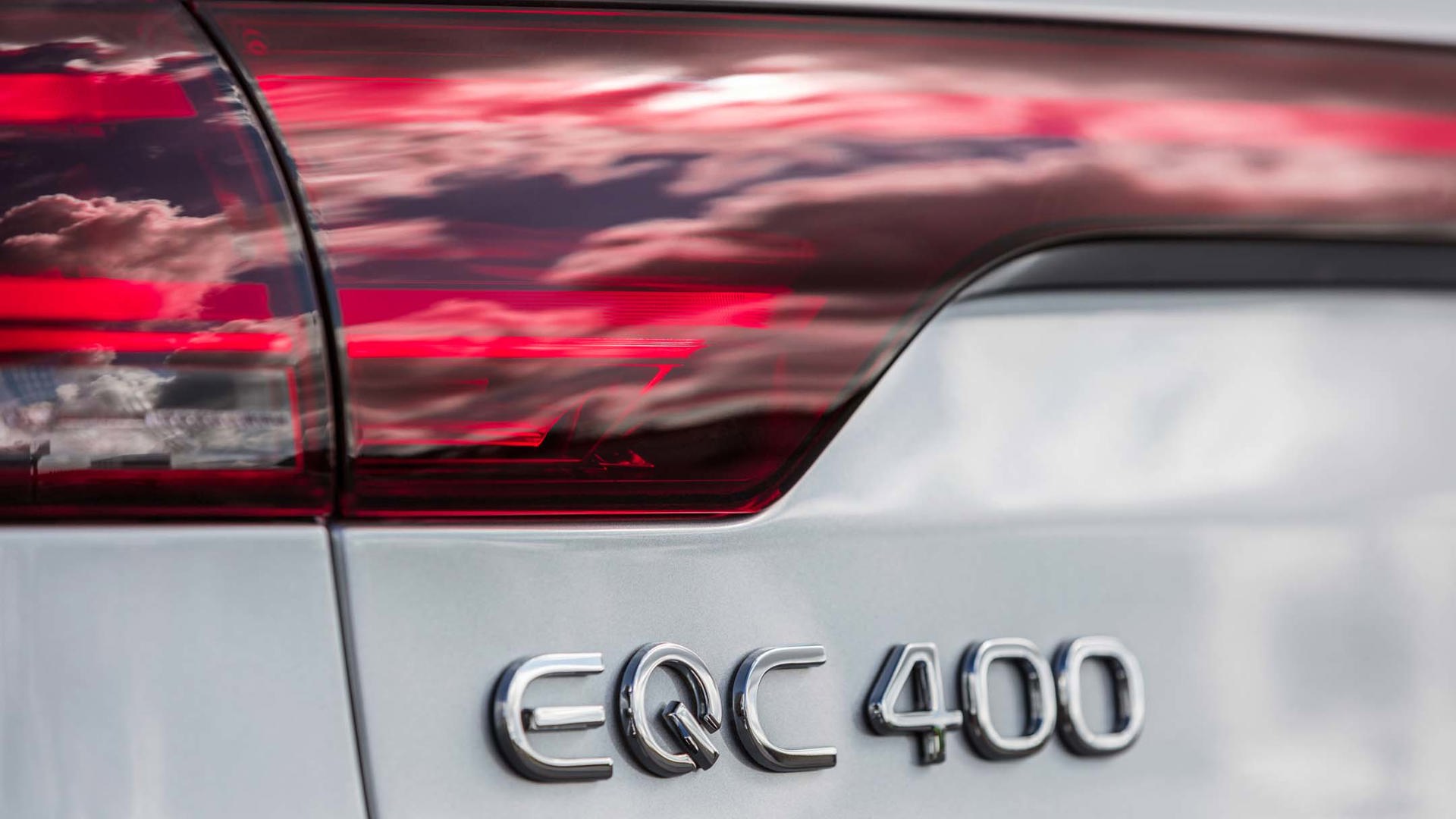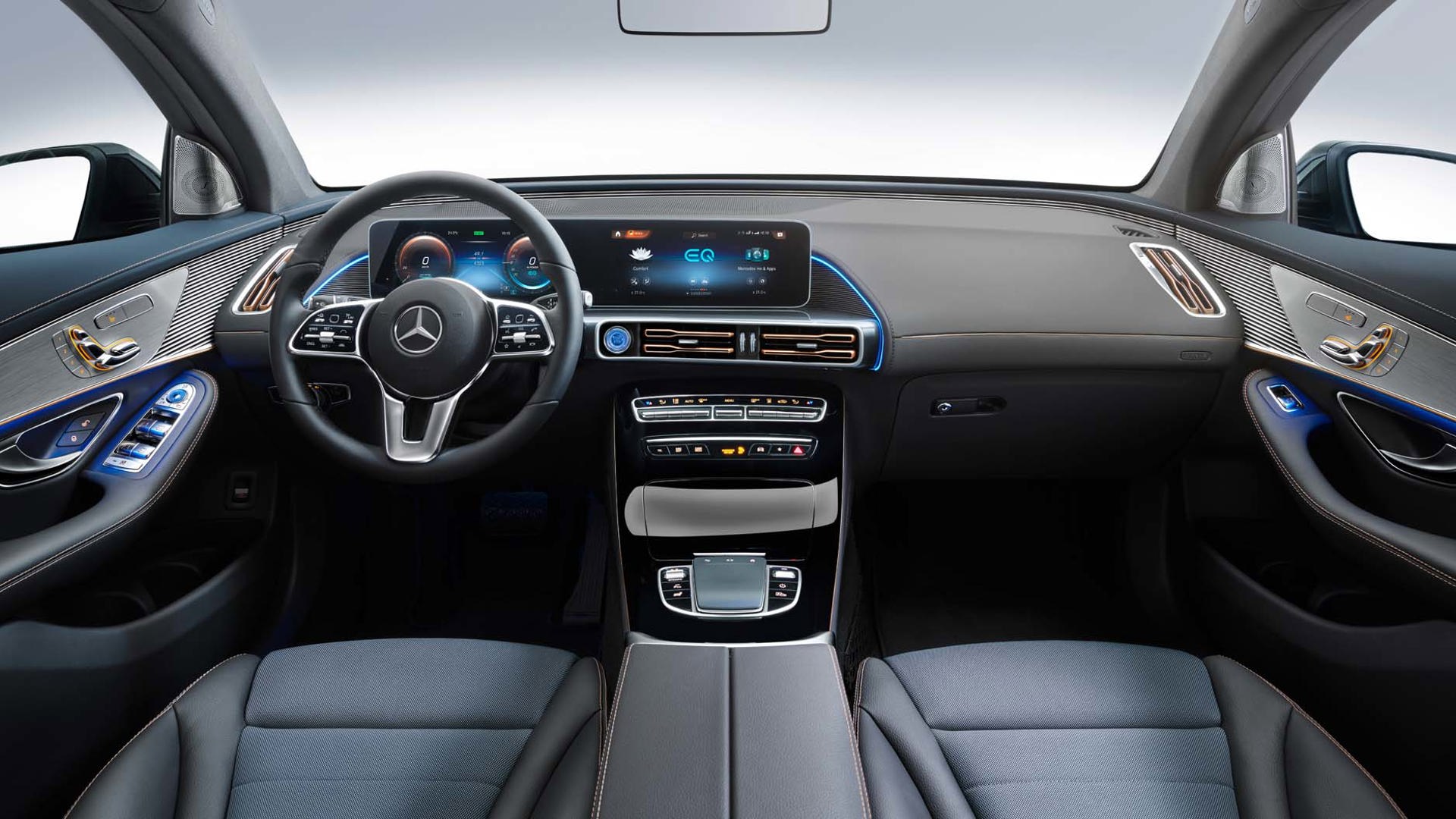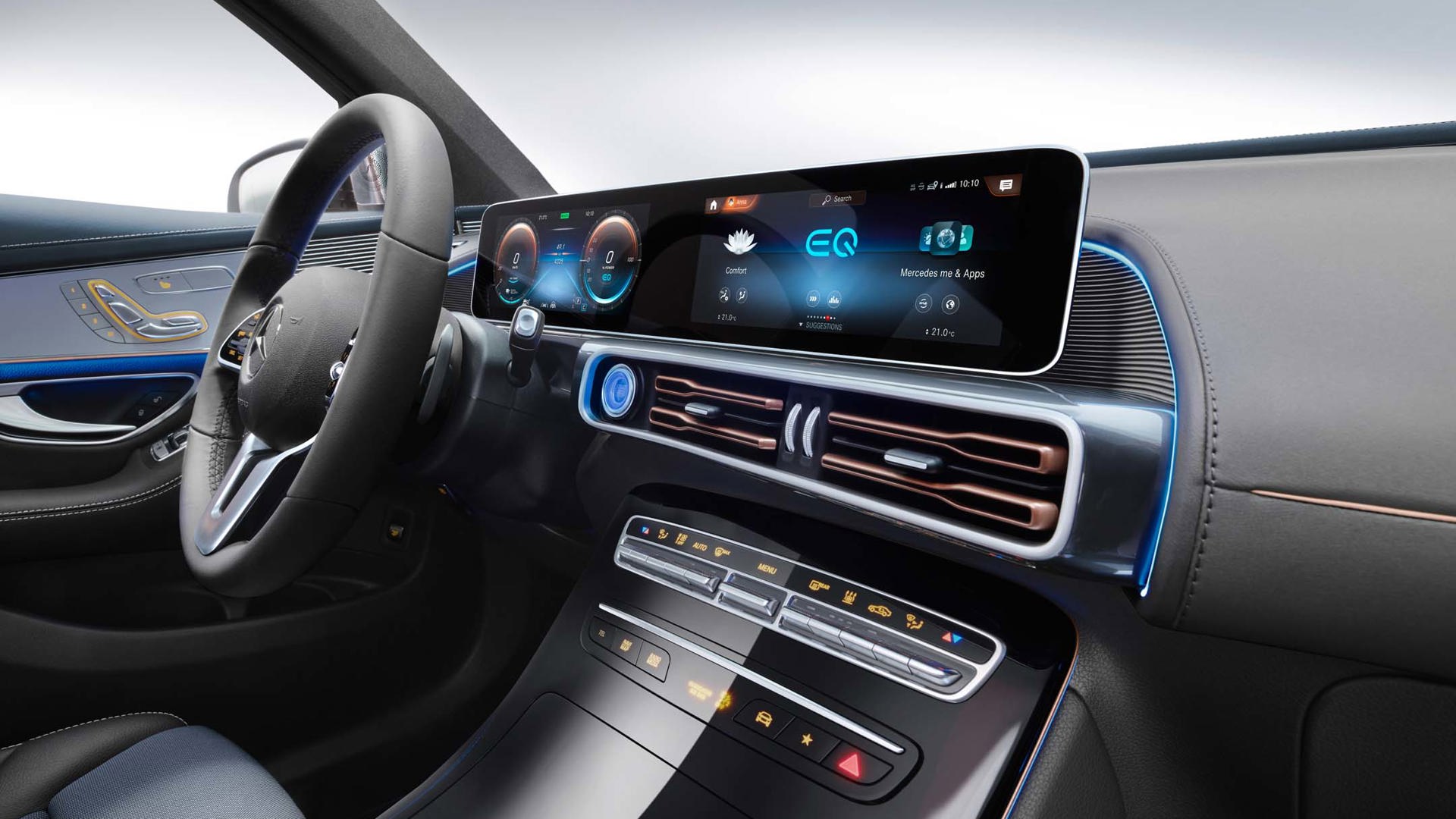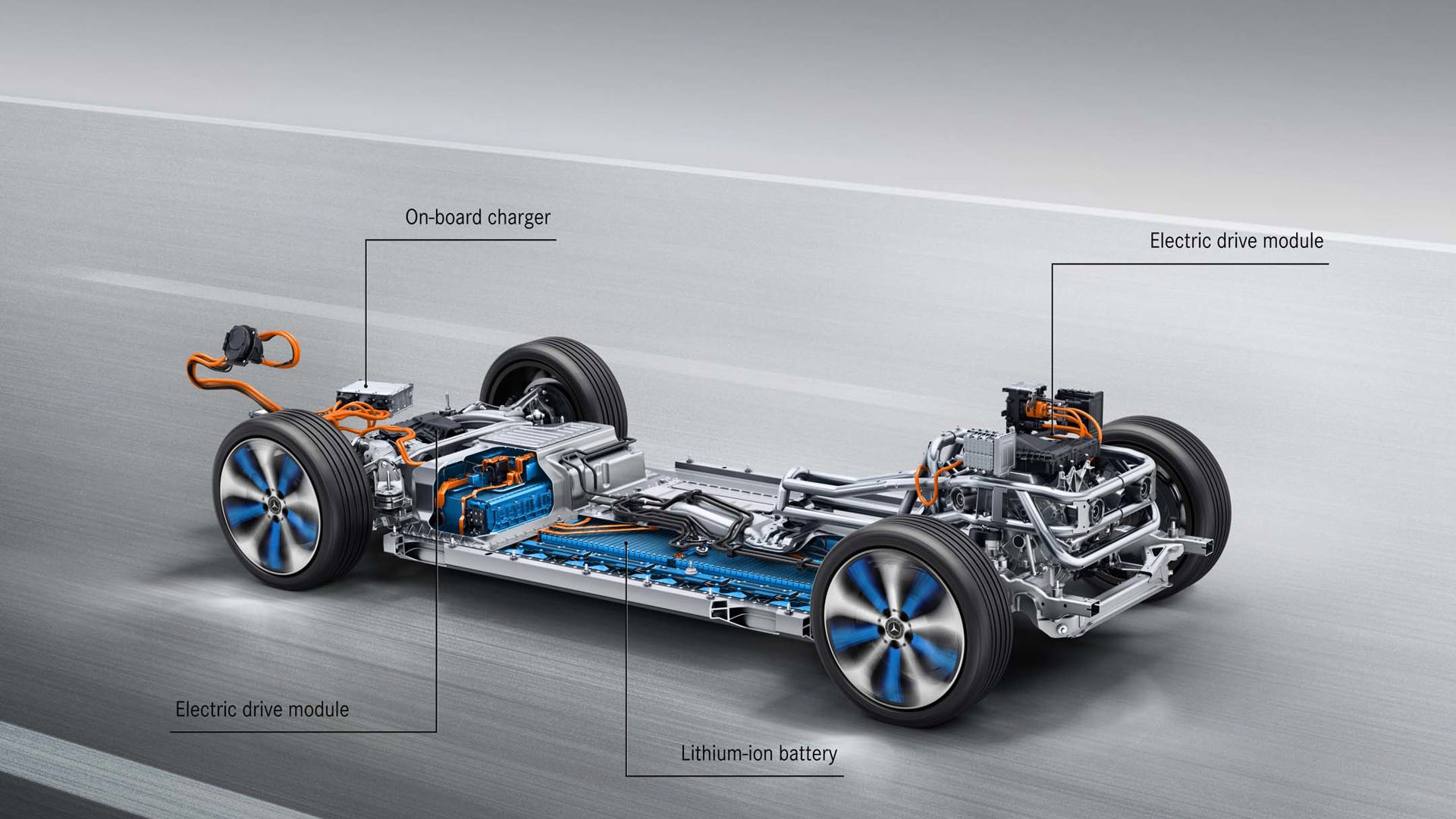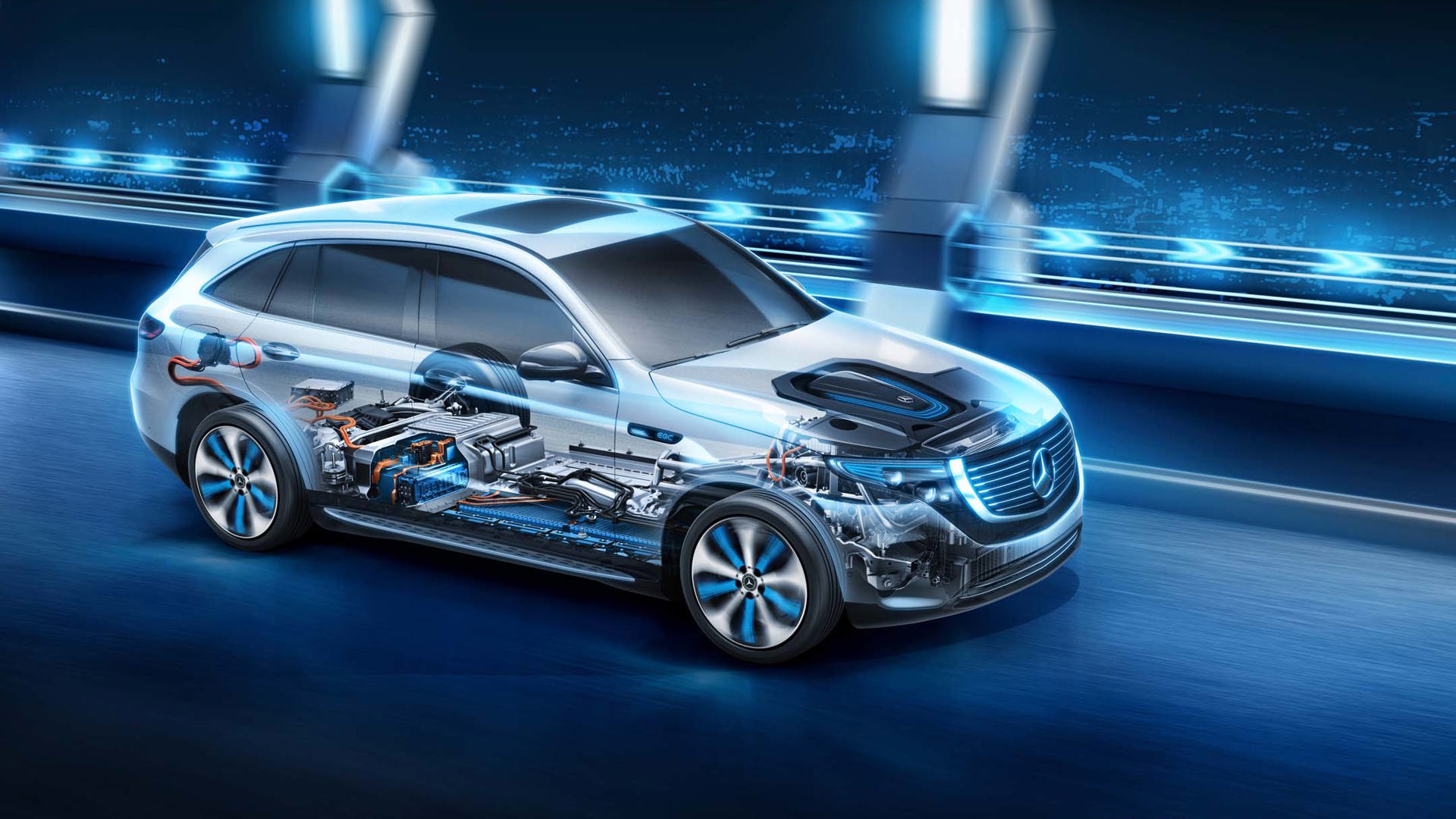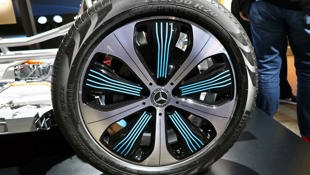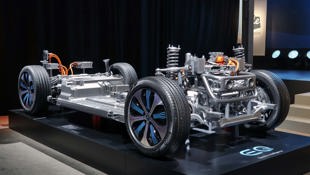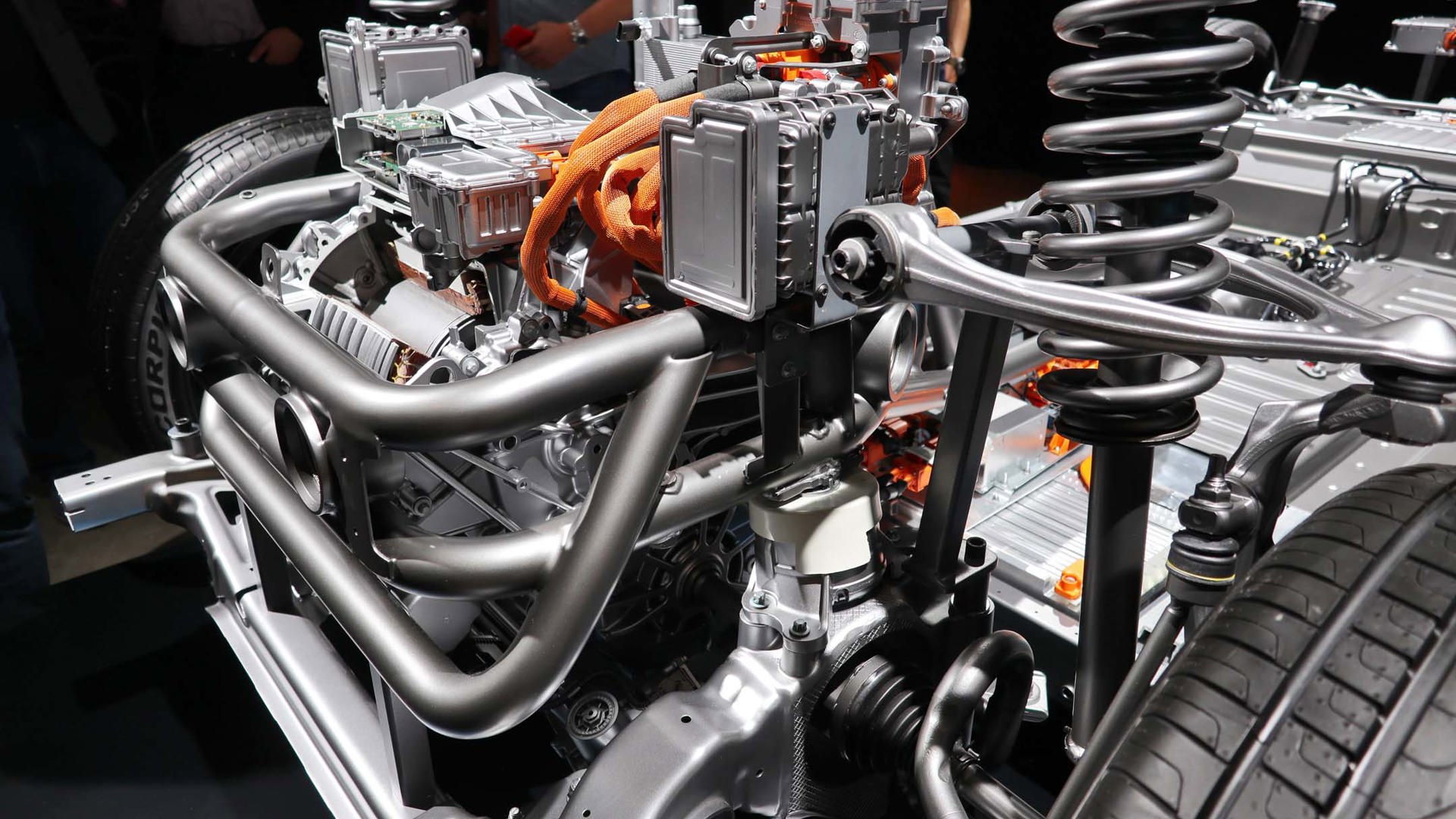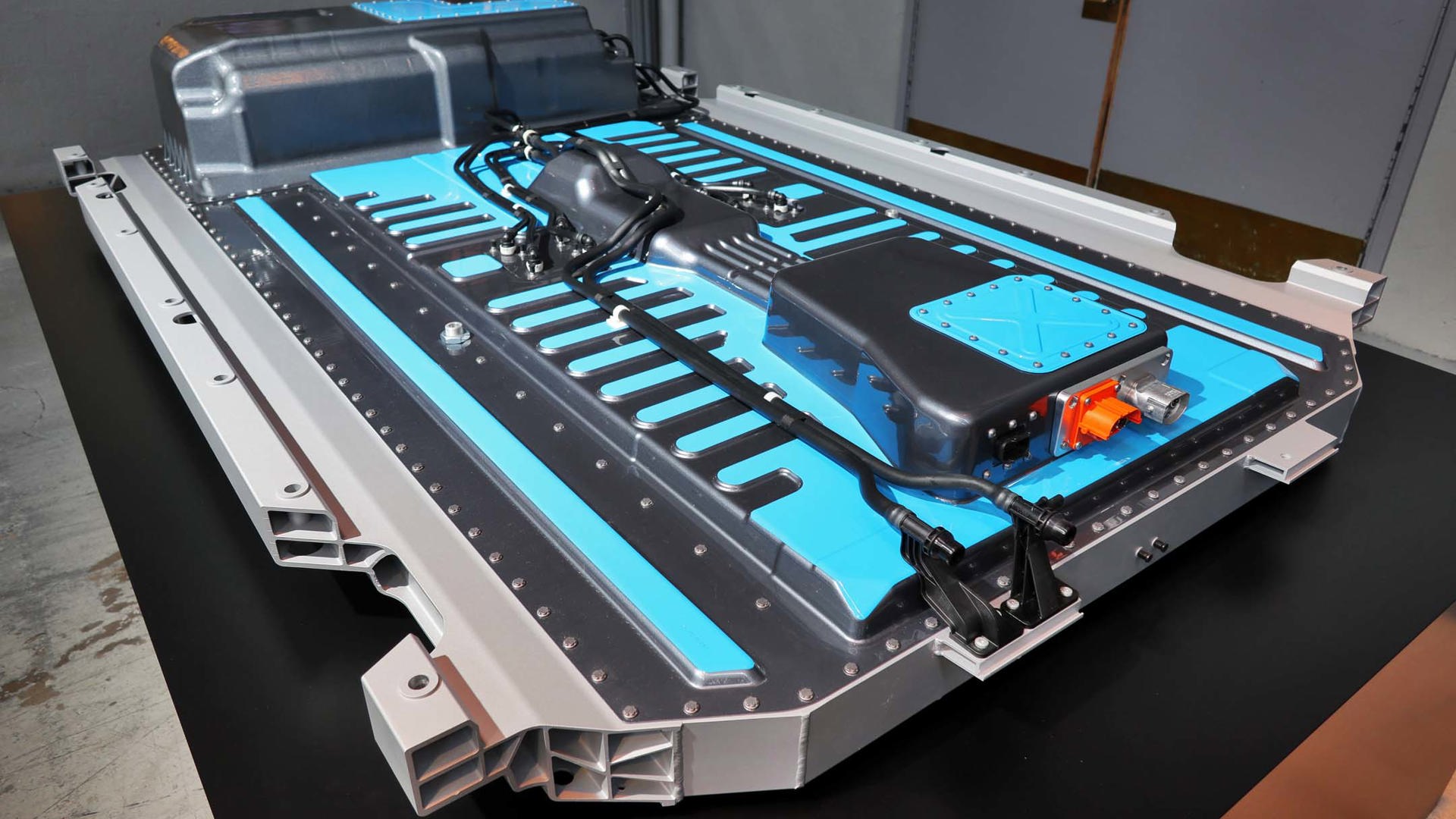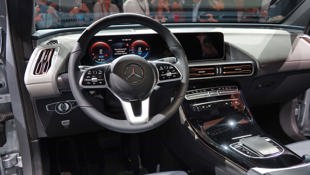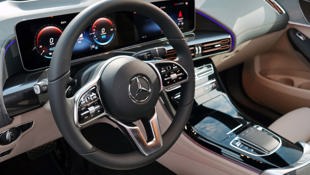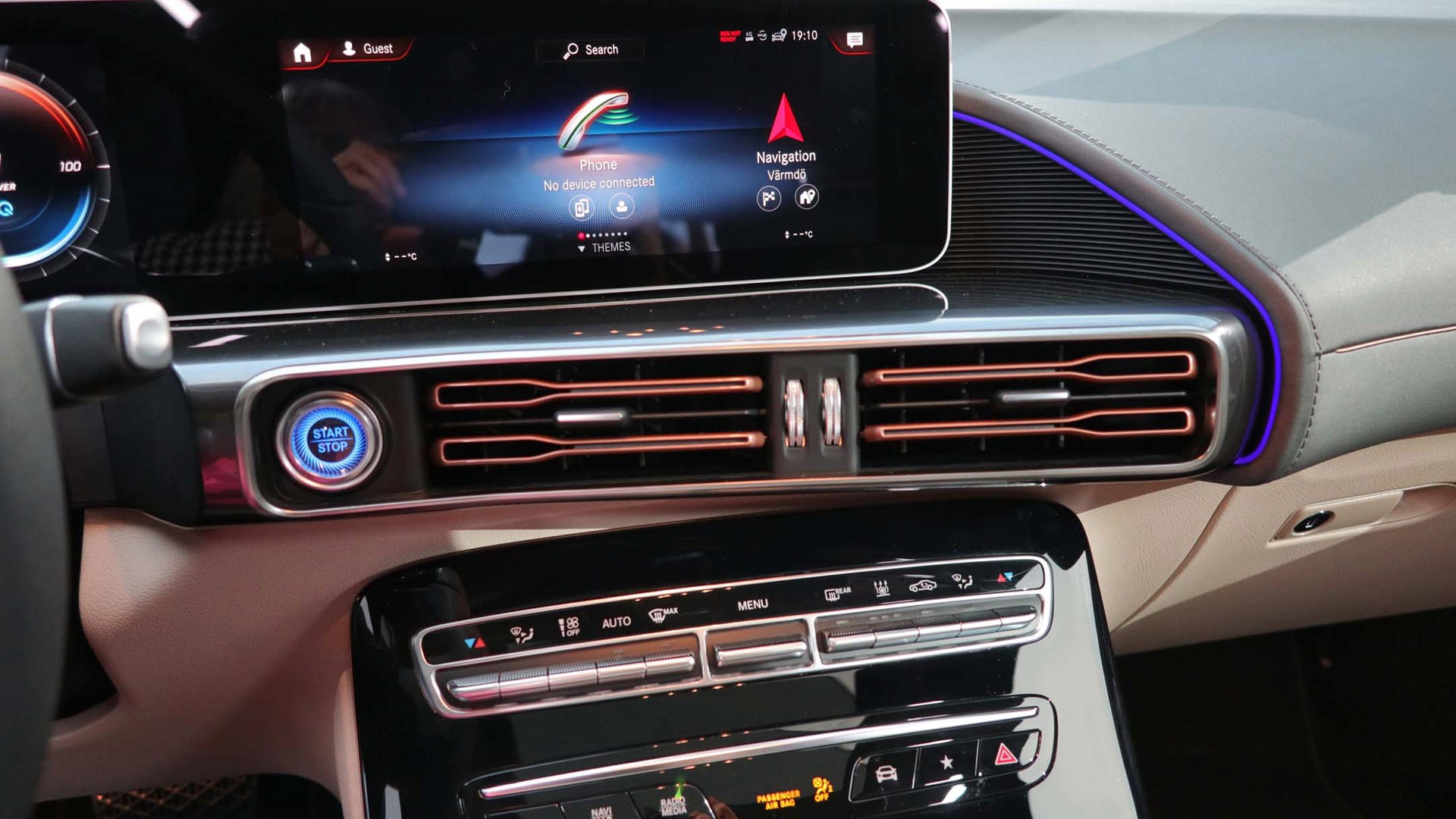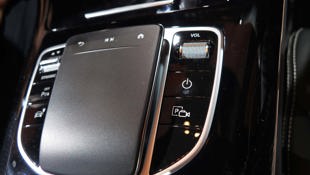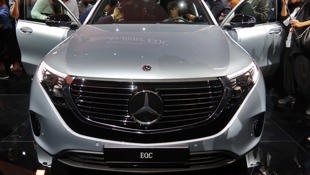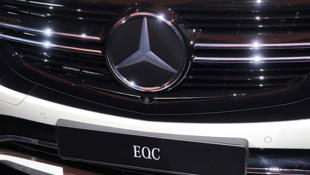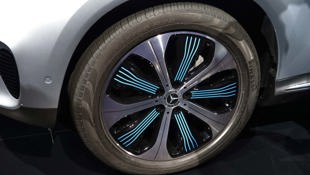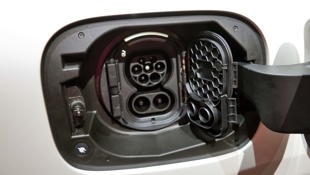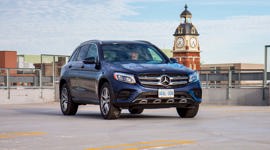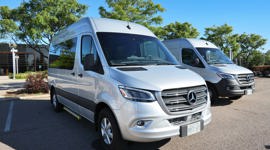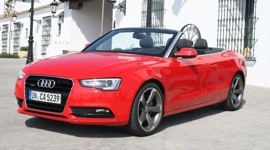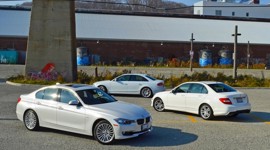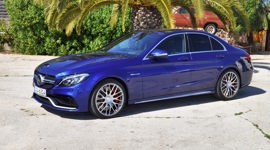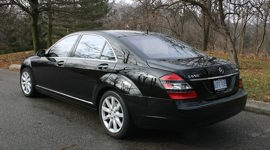STOCKHOLM, Sweden – The electric car has ridden quite the wave. It was a pricey luxury item when it debuted around the turn of the 20th century, and later trickled down to mainstream makers. But now several premium manufacturers are getting in on the action, the latest being Mercedes-Benz and its new EQC.
Intended to be right there, ahead of the curve.
The company presented it to the world here, before it goes into production in 2019. The EQ name will become the automaker’s electric vehicle brand – a combination of Intelligence and Emotion (how it’s EQ and not IE is complicated) – with the EQC as its first model.
Given the current state of customer demand, Mercedes-Benz has decided – no doubt wisely – to make its initial offering a midsize SUV, similar in size to the current GLC but with a lower roof for better aerodynamics. It even has a towing capacity of 1,800 kg, although hauling that weight of course will cut into its range, estimated now at roughly 450 km on the (generally optimistic) NEDC scale.
The EQC joins the ranks of several other premium manufacturers in battery-powered battle, alongside those like Tesla, Jaguar’s I-Pace, Audi’s e-tron, BMW’s i models, and Volvo’s upcoming Polestar. While electric vehicles are still just the tiniest smidgen of the market overall, it looks like they’re not about to give up their foothold anytime soon. Mercedes-Benz plans to have ten electric-only vehicles by 2022 and in every segment, ranging from the tiny Smart to its largest models. That’s on a global basis, so how many we’ll see in Canada is anyone’s guess.
The EQC is pretty much made in-house in Germany: the vehicle will be built in Bremen, while the battery is made at a Mercedes-Benz facility near Dresden. China will be a target market and its cars will be built in Beijing through a German–Chinese joint venture.
EQC launches electrified EQ sub-brand
The company initially introduced its concept EQA compact hatchback at the Frankfurt Motor Show in 2017. The automaker’s overall environmentally-friendly-vehicle strategy includes the EQ all-electric models; EQ Power hybrid vehicles; and EQ Boost, which combines conventional engines with motor-generators to provide short boosts of electric torque and smooth stop-start technology.
The EQC is a handsome beast, with such new-to-Mercedes styling cues as a light band that runs across the hood line, connecting the light-up brows over the headlights, and a matching red band across the rear. A radiator grille obviously isn’t necessary, but according to the car’s designer, it’s included to “give the EQC a face”. At a time when many manufacturers are getting as edgy as possible with their designs, the EQC is super-smooth, with as few creases and seams as possible. That, its developers say, is going to be the trend of the future and the car was intended to be right there, ahead of the curve.
The interior also includes some conventional Benz styling, including wide horizontal information screens and rows of control buttons, along with new-to-EQC tweaks such as square vents with accents meant to mimic a circuit board’s wires, instrument screens that change colour depending on electricity use or regeneration, and – instead of a leather-clad dashboard – material that mimics high-tech sportswear.
Big power, torque, and (estimated) range
The lithium-ion battery fits under the floor and has a rating of 80 kWh, compared to 90 kWh in an I-Pace and its estimated 378 km of range. The EQC feeds two electric motors, one on each axle, to provide all-wheel drive without connecting them by a driveshaft. The front one does most of the work – for efficiency, the company says – while the rear one powers up as needed for road conditions and for sportier driving. The battery’s position lowers the centre of gravity and also helps to dampen vibrations for a quieter ride.
Power output from the combined motors is 402 horsepower and 564 lb-ft of torque, and in preliminary European testing, provides a range of around 450 kilometres. The battery accounts for some 650 kg of the vehicle’s overall 2,425 kilos of curb weight. The top speed is governed to 180 km/h, so while drivers on the unlimited sections of Germany’s Autobahn might not keep up with AMGs alongside, they’ll still be able to have some fun.
Mercedes-Benz will offer a “Wallbox” home charger for European customers, but it won’t be available in Canada. Here, owners will have to go through a third-party supplier for something to hang on the garage wall. On 240-volt power, charging a completely depleted battery should take between 10 and 11 hours.
Fast-charging will be an option, if you can find a public DC station, using the CCS interface favoured by German automakers (Japanese companies tend toward CHAdeMO, while Tesla has its own proprietary charger, and it’s still up in the air if one will win out to become the universal standard). On DC, charging from near empty to 80 percent will take about 40 minutes.
Figuring out how and where to charge will be made easier through MBUX, for Mercedes-Benz User Experience, a car-based interface that will arrive in Canada with the upcoming A-Class, and Me Connect, expected to arrive in time for the EQC’s market launch in 2019, which connects the car’s functions through a mobile app.
The Me Connect app works with the navigation system to estimate the car’s range – taking into account such factors as traffic, speed limits, and ambient temperature – and suggesting where to stop and fast-charge to make the final destination.
Using natural voice recognition, you’ll also be able to give the car such commands as “Be fully charged by 8 pm” and the system will make sure that your plugged-in car starts charging when required to meet the deadline.
No pricing and few Canadian market launch details yet
Pricing hasn’t been announced, and Mercedes-Benz Canada is still working on a rollout of the brand in terms of exactly how and where it will be sold and serviced. How much the EQC costs when it arrives will determine if it qualifies for any electric-vehicle rebates, since British Columbia withholds incentives if a vehicle is more than $77,000, while Quebec provides different rebate levels for vehicles under $75,000 and those under $125,000. For reference, Ontario’s former rebate program capped its incentives at a $75,000 price tag.
So where does the EQC fit into the general auto equation? Given the lack of charging infrastructure and the overall predominance of the internal combustion engine, it’s not likely that electric cars will rule the roost anytime soon.
Instead, this all-electric sport-ute will more likely be integrated as a piece of the puzzle. The premium automakers have been down this route before: they originally introduced SUVs to capture buyers who needed a family-sized vehicle and were putting another brand’s minivan or sport-ute in the driveway alongside their two-seater sports cars.
The EQC won’t get you across Canada as easily as is currently done by stopping at gas stations along the way, but a lot is still within reach, including the daily commute, which might only require drivers to charge once or twice a week. Even if widespread vehicle electrification is still in the future, it looks like no one can afford to be left behind.
